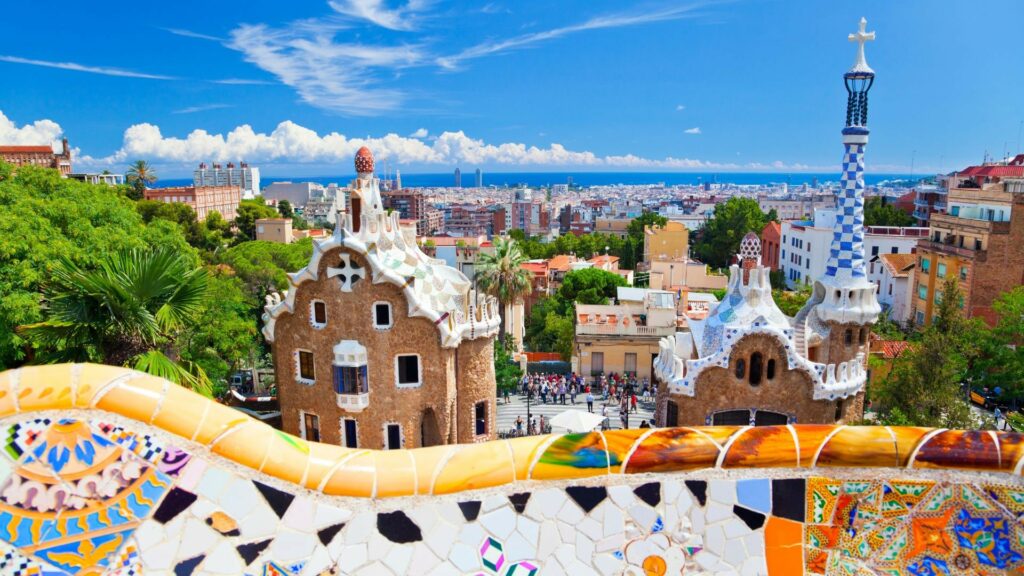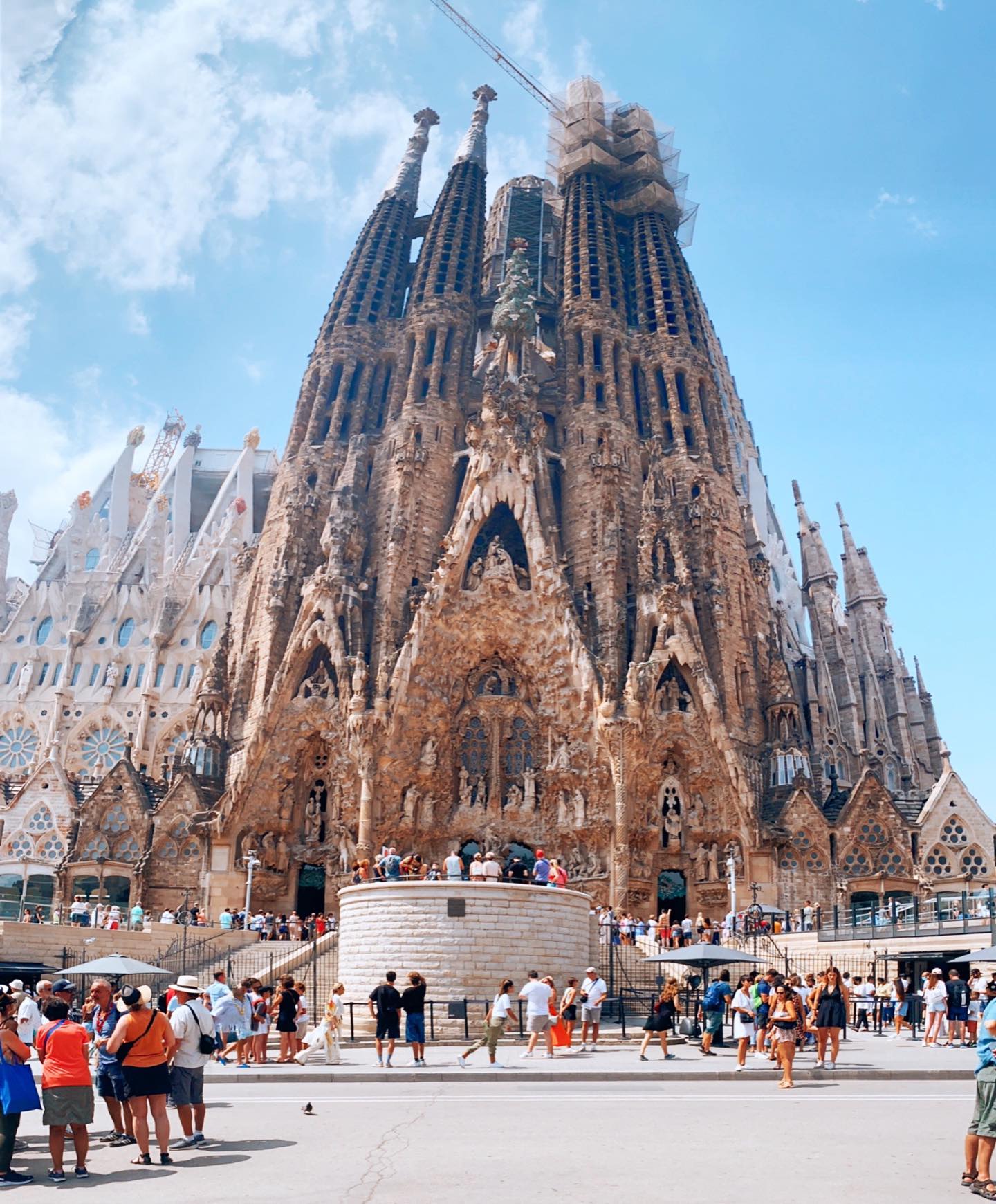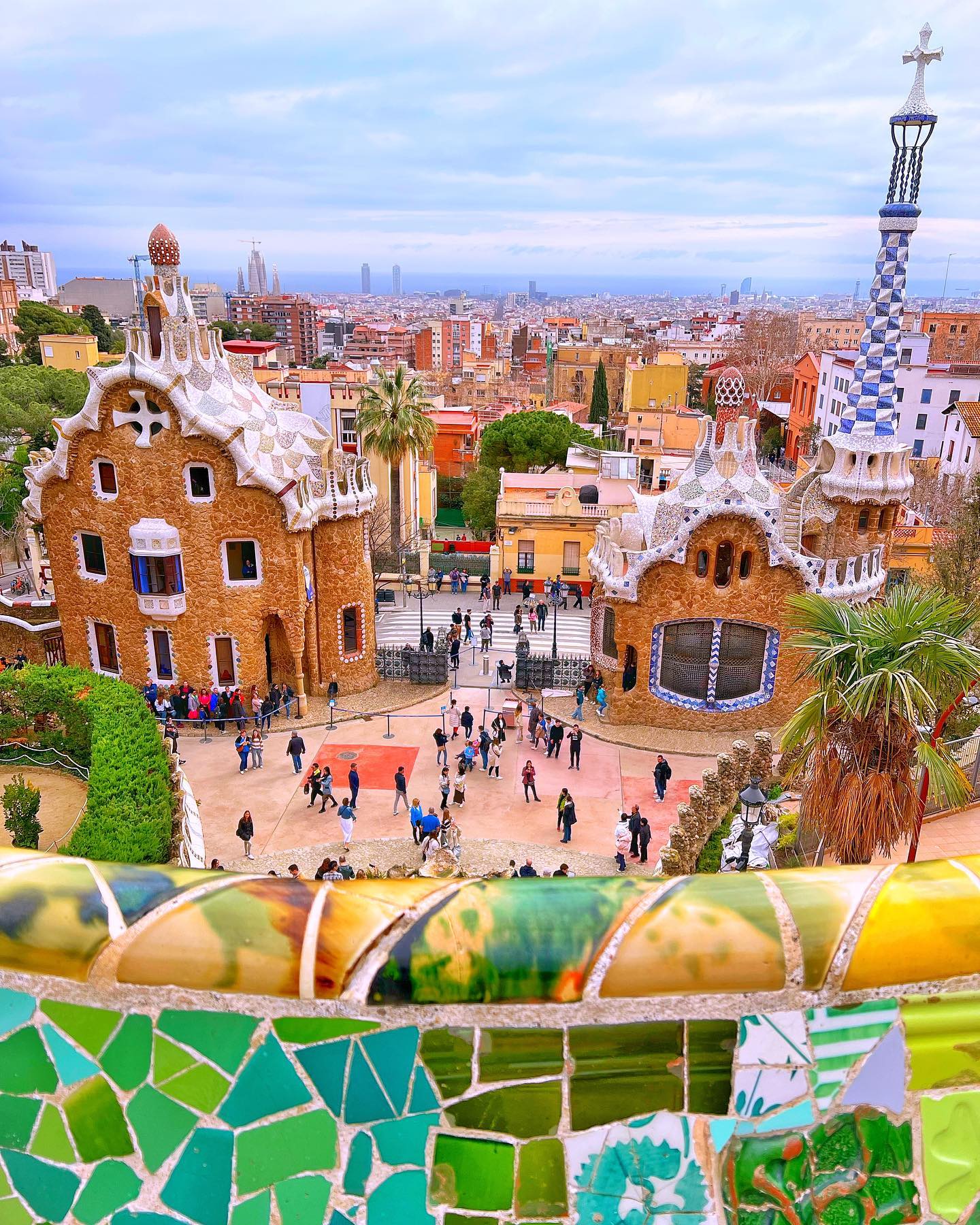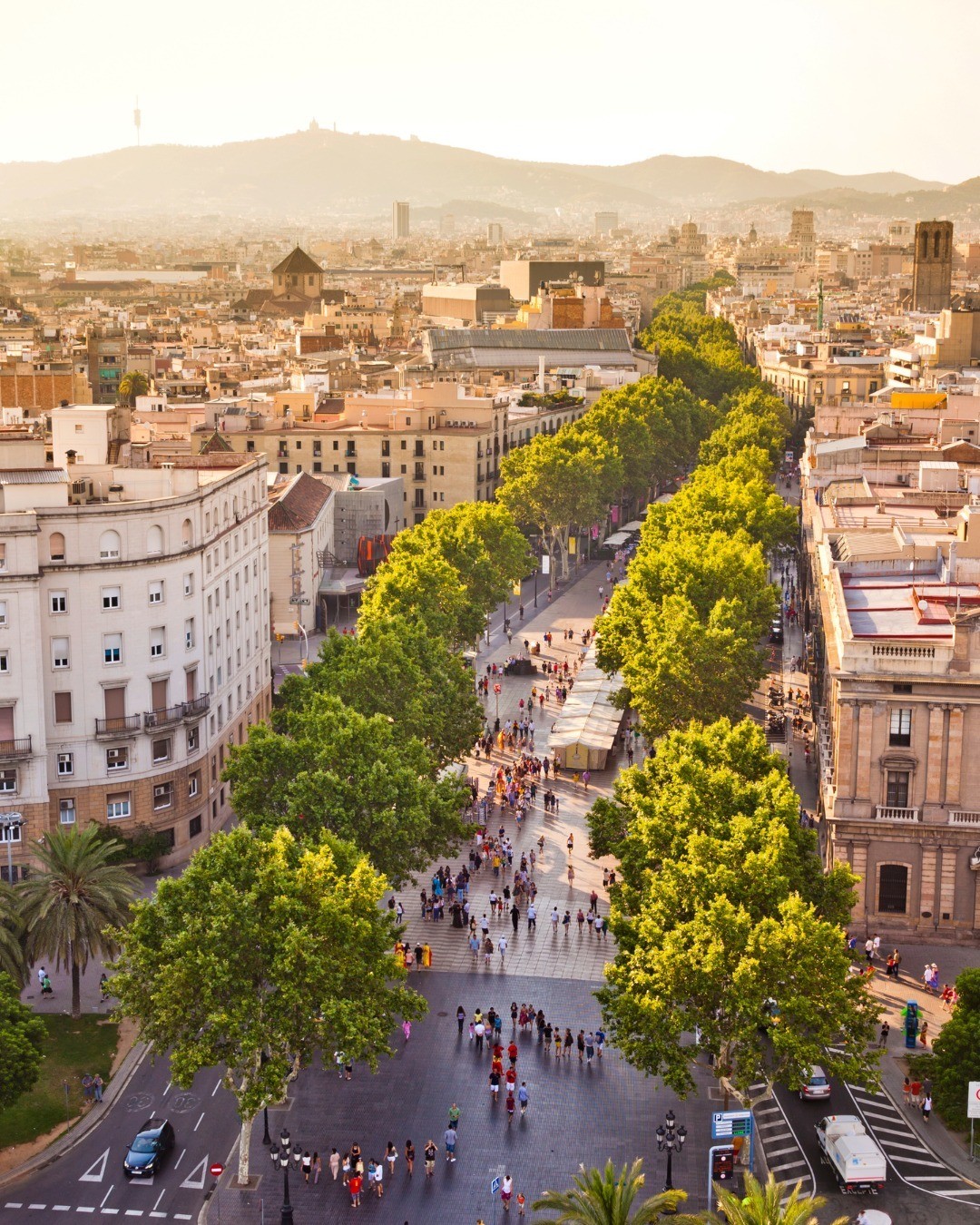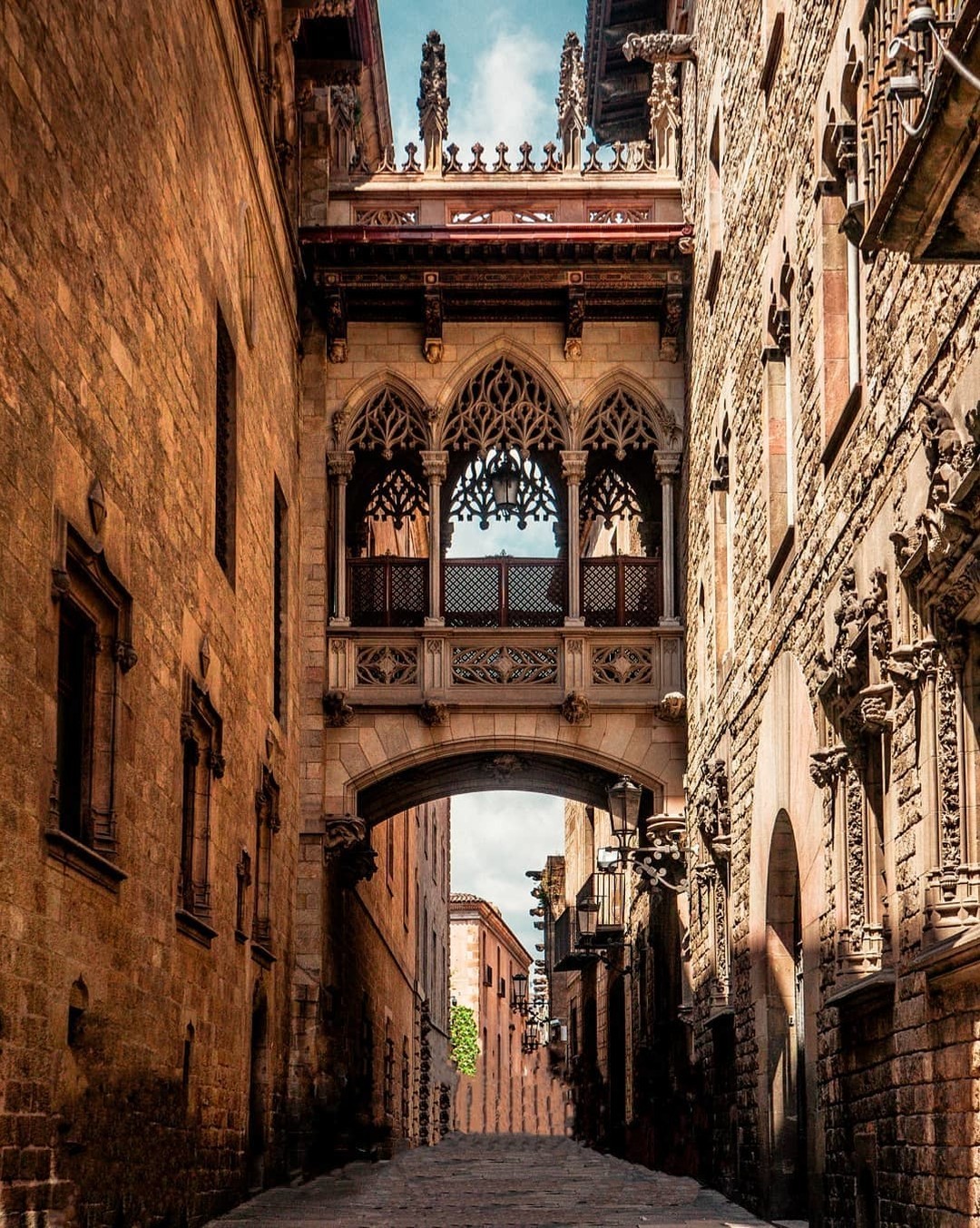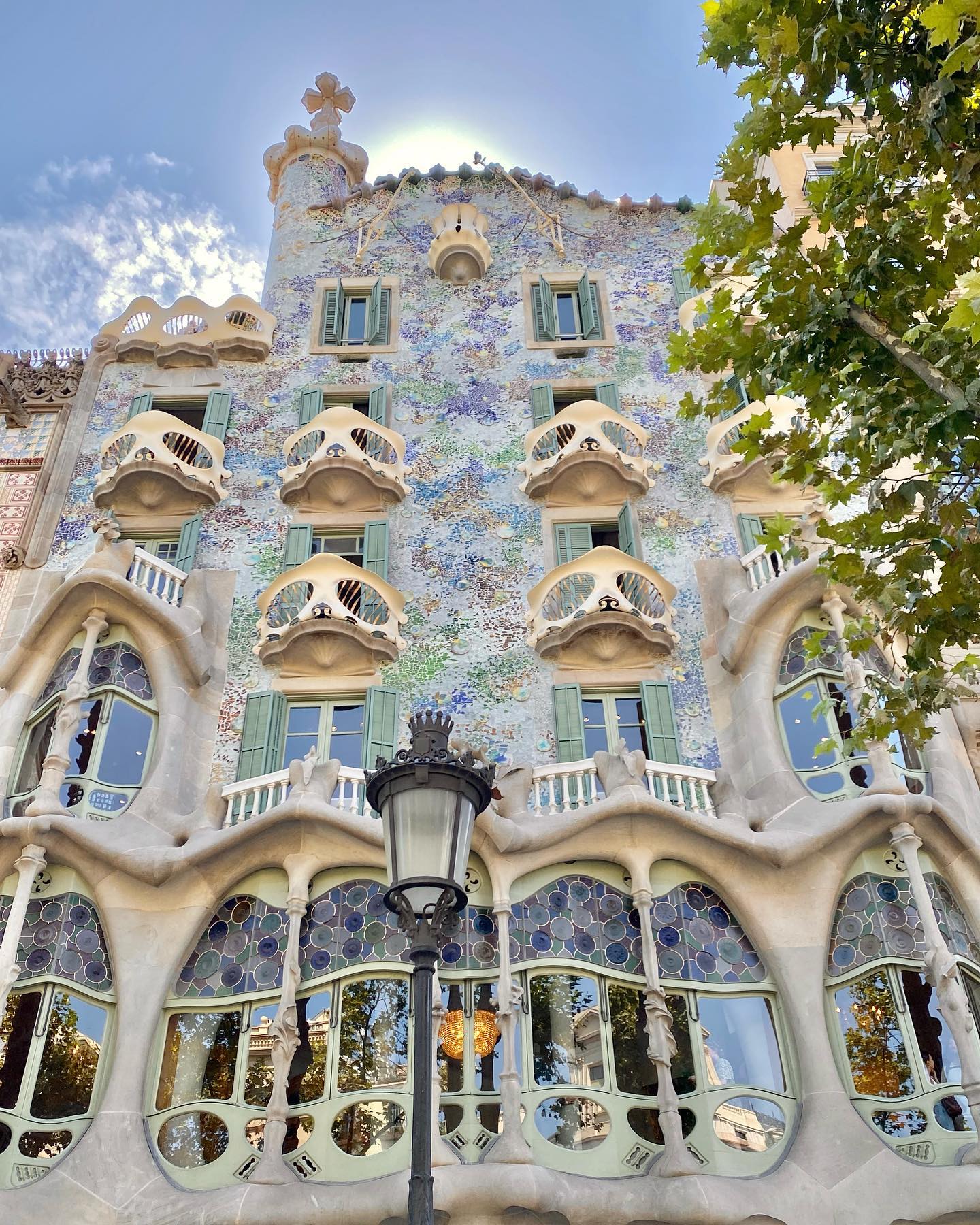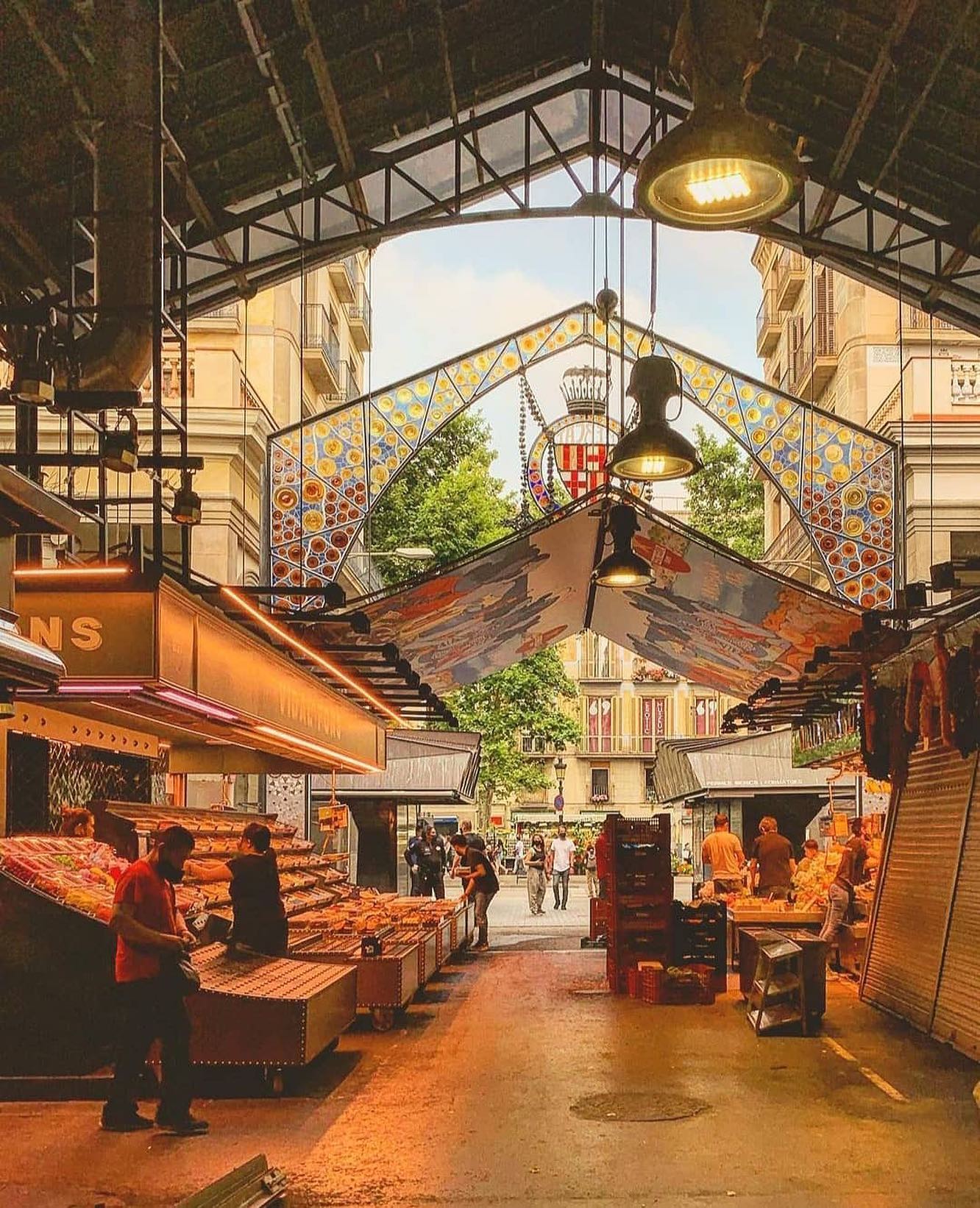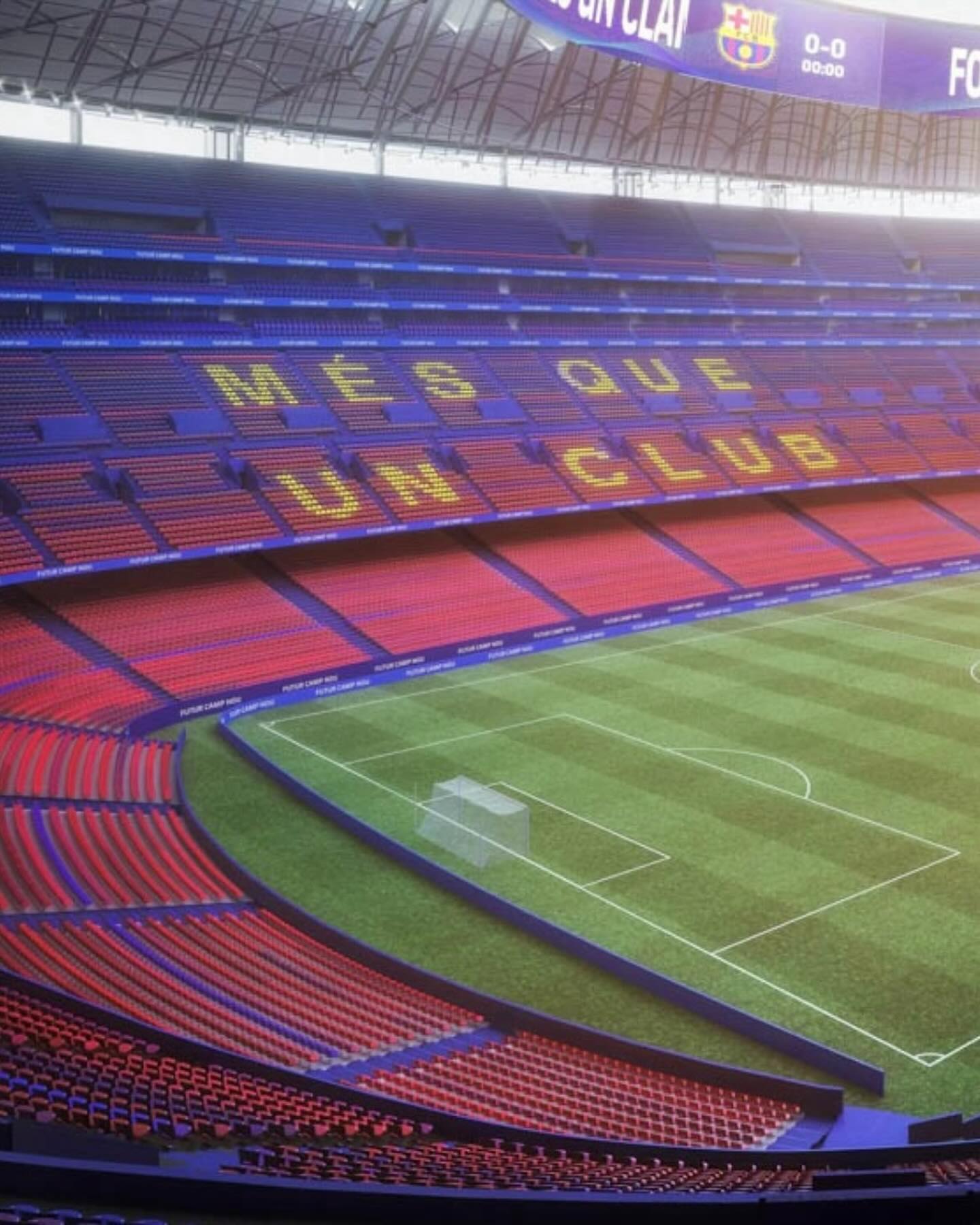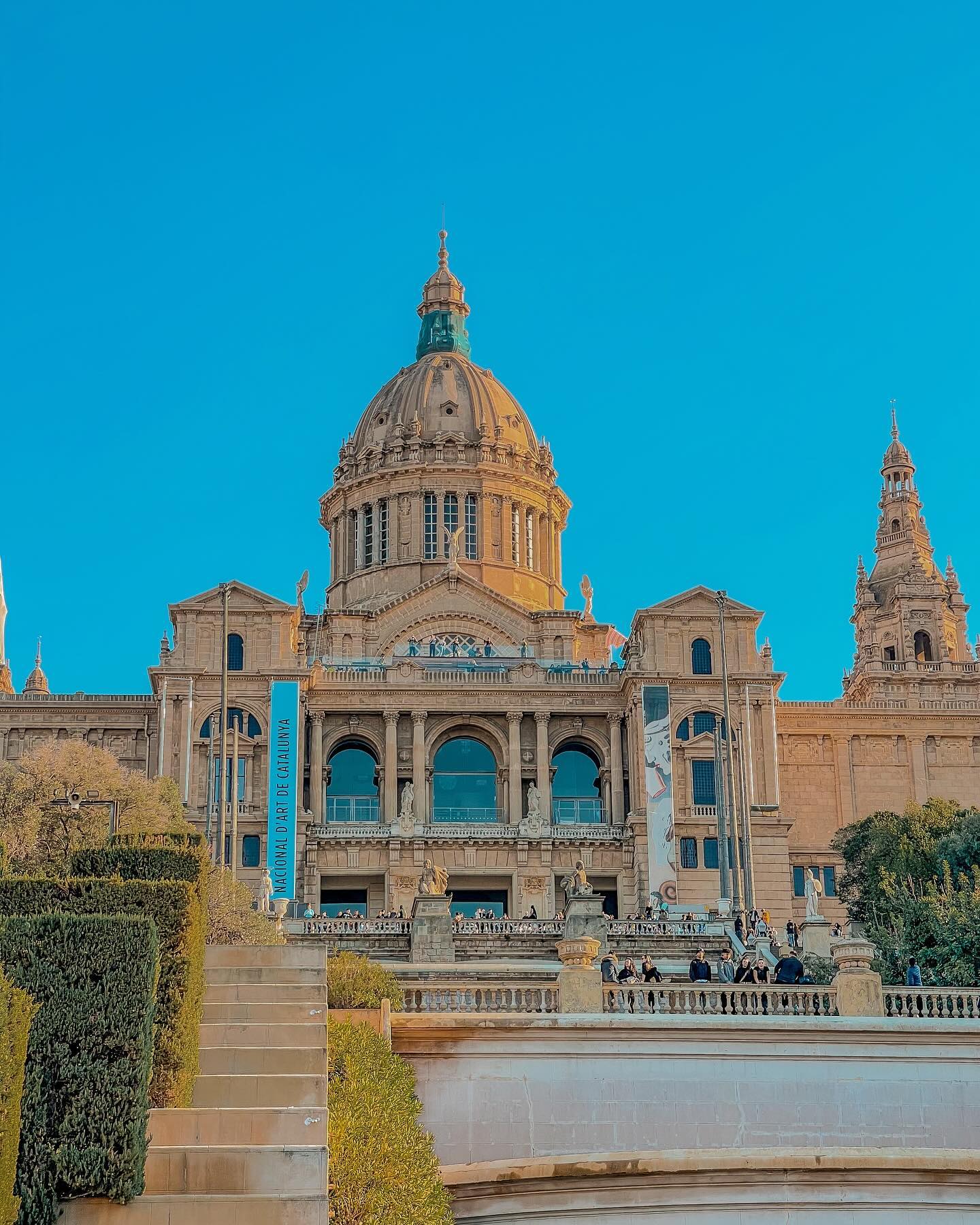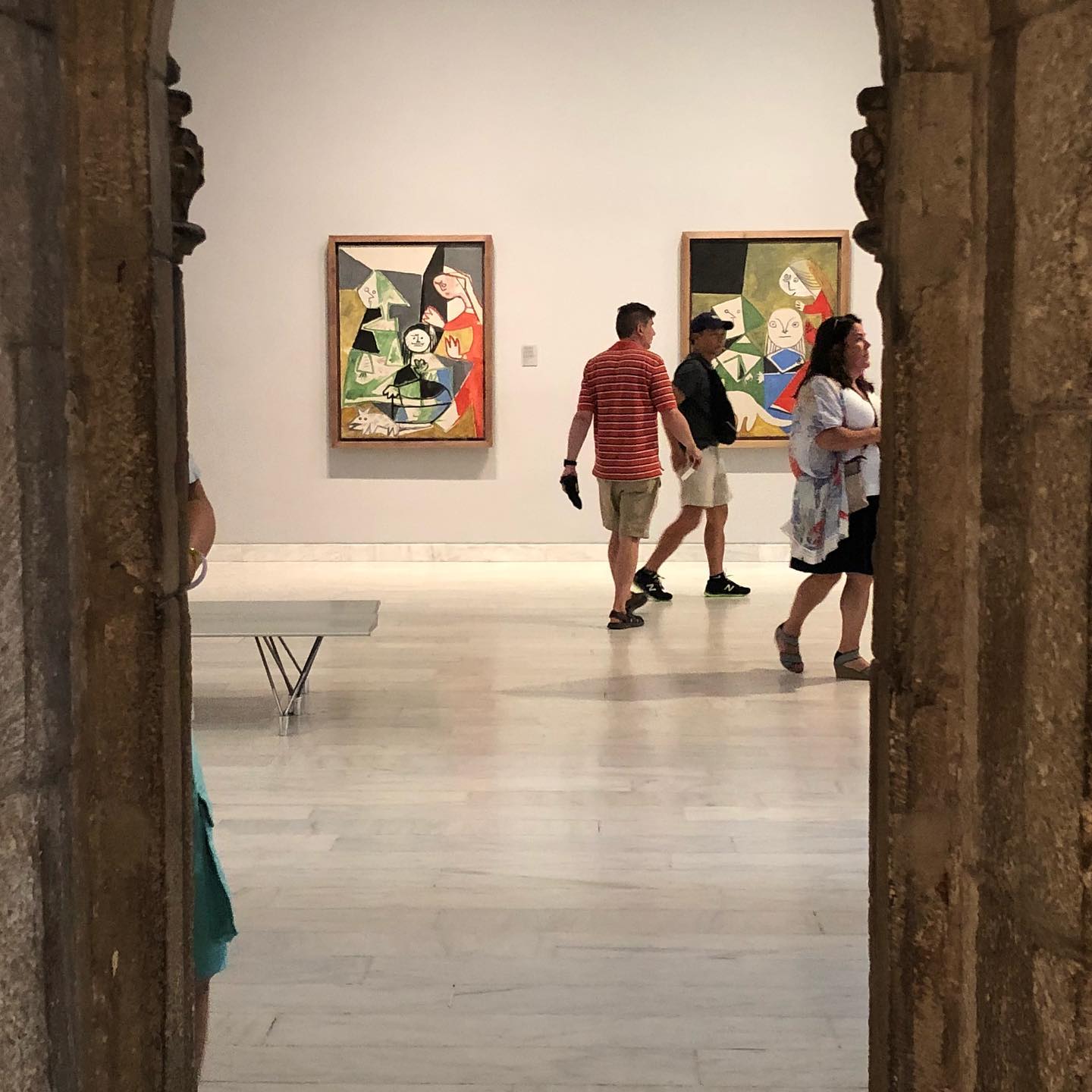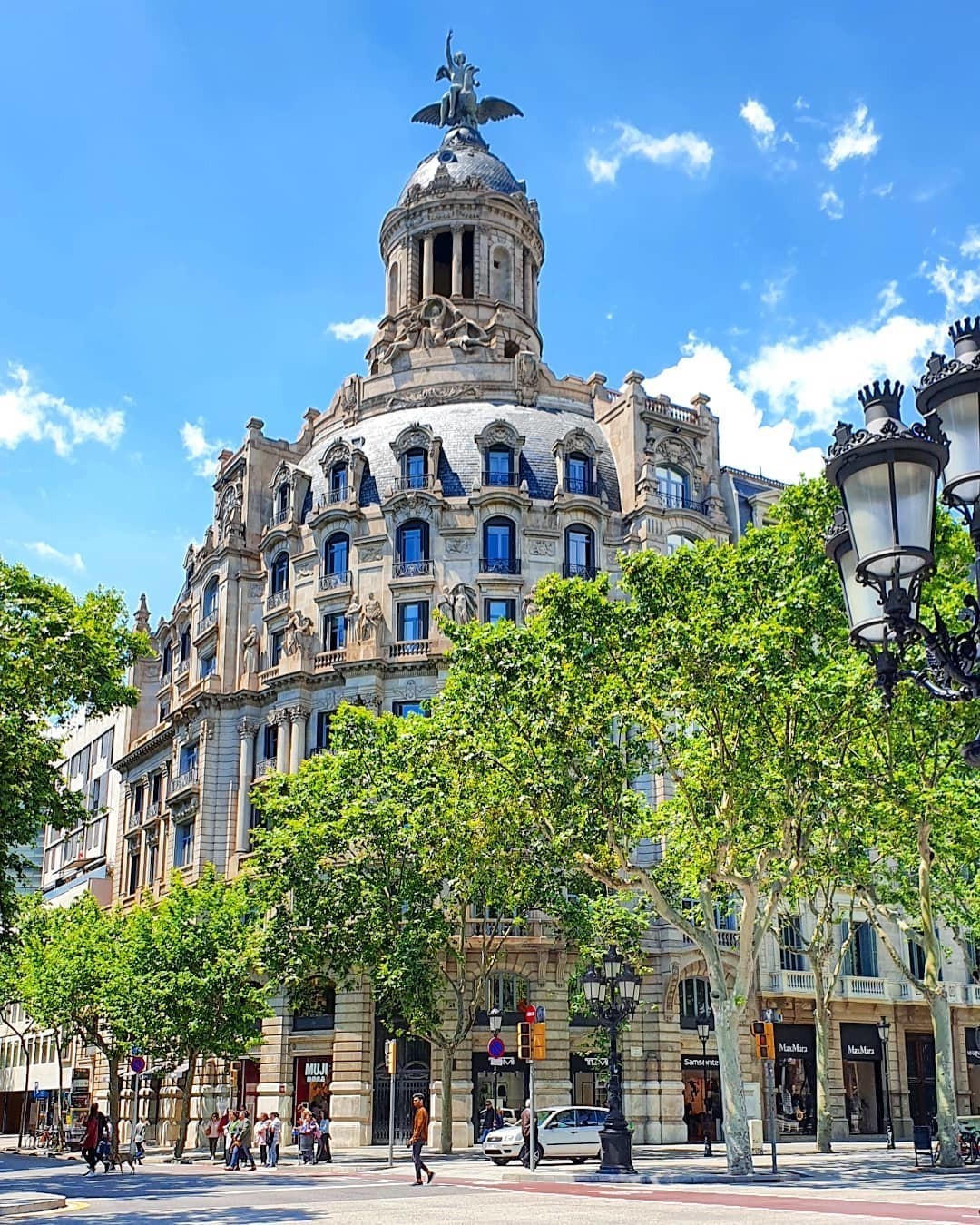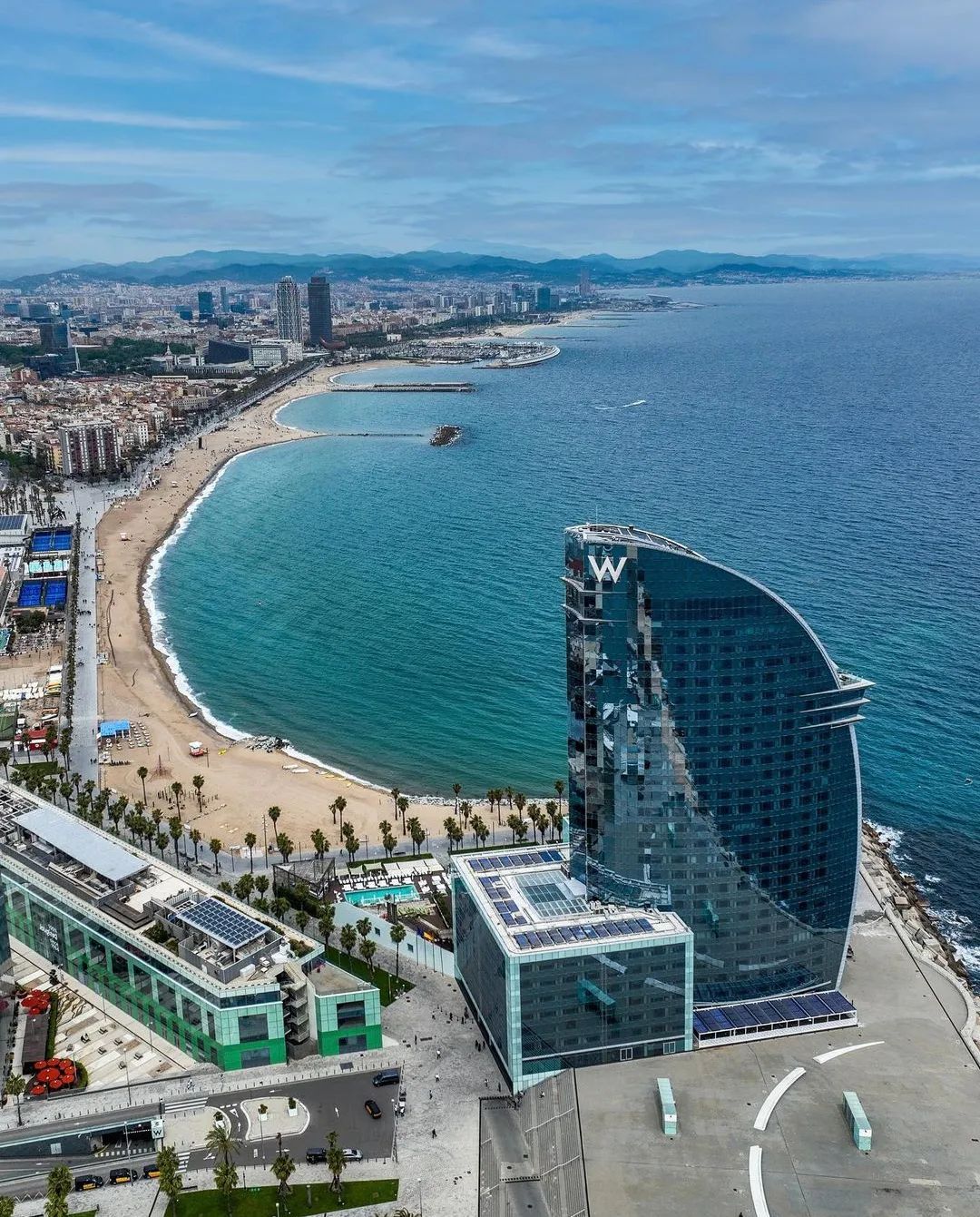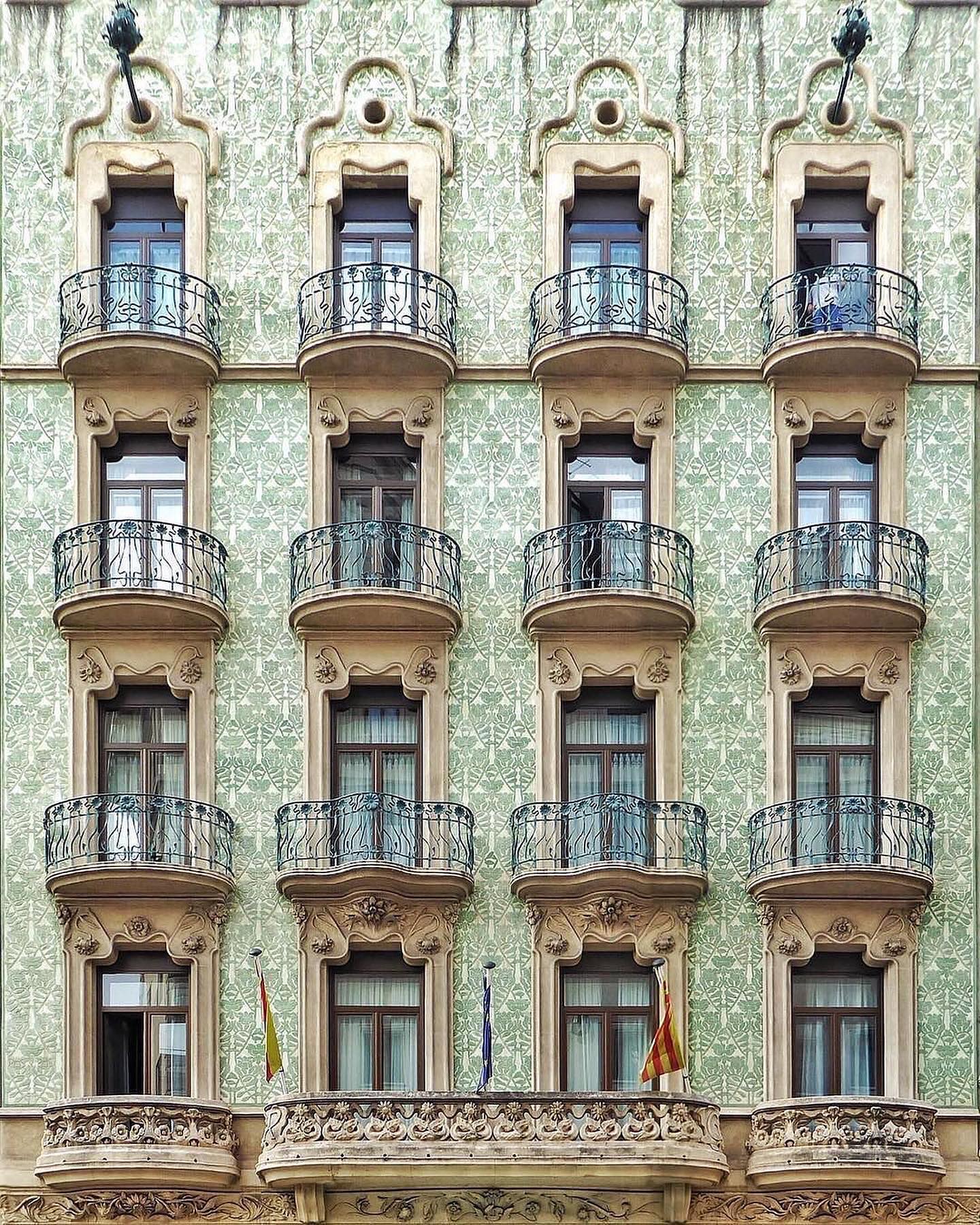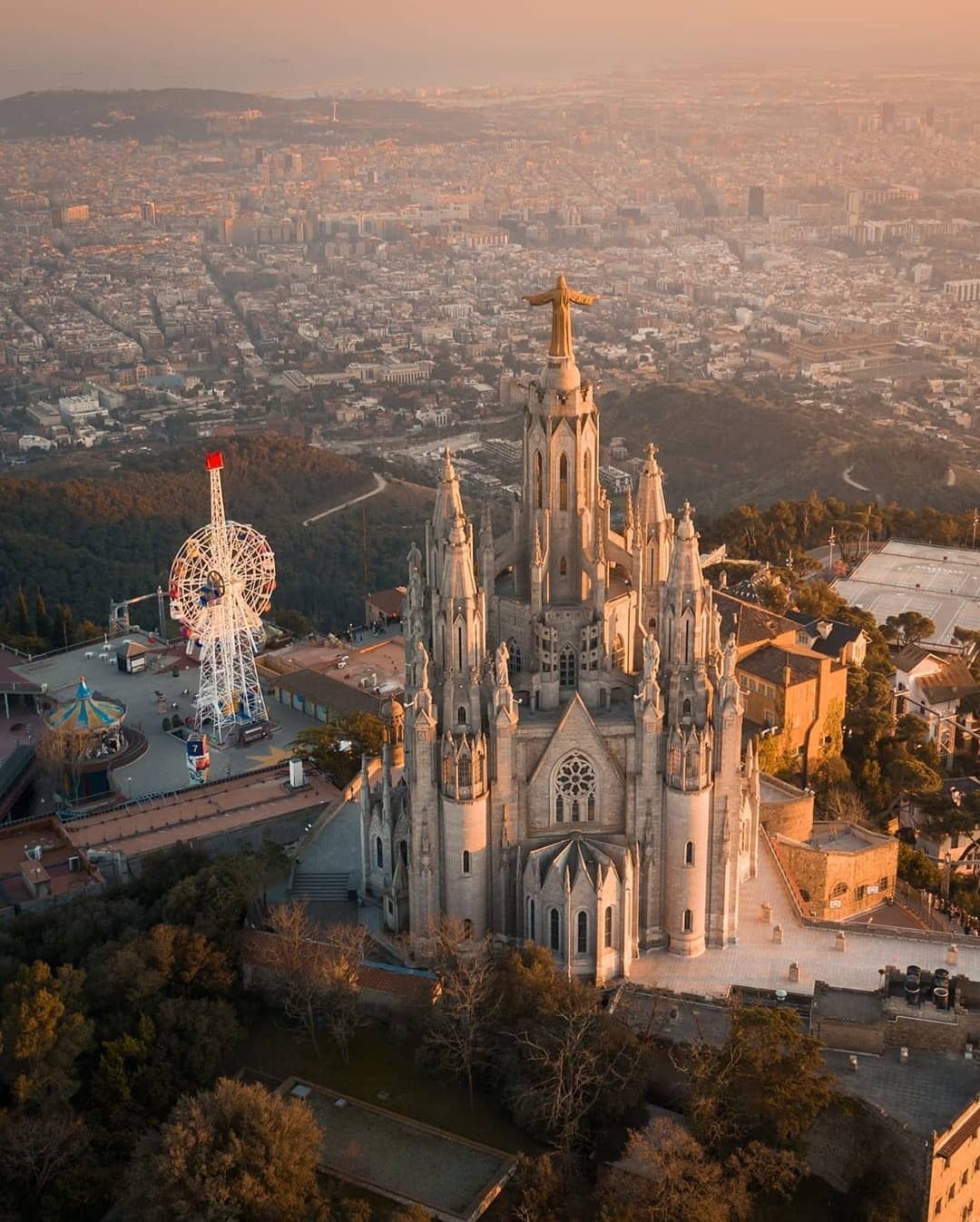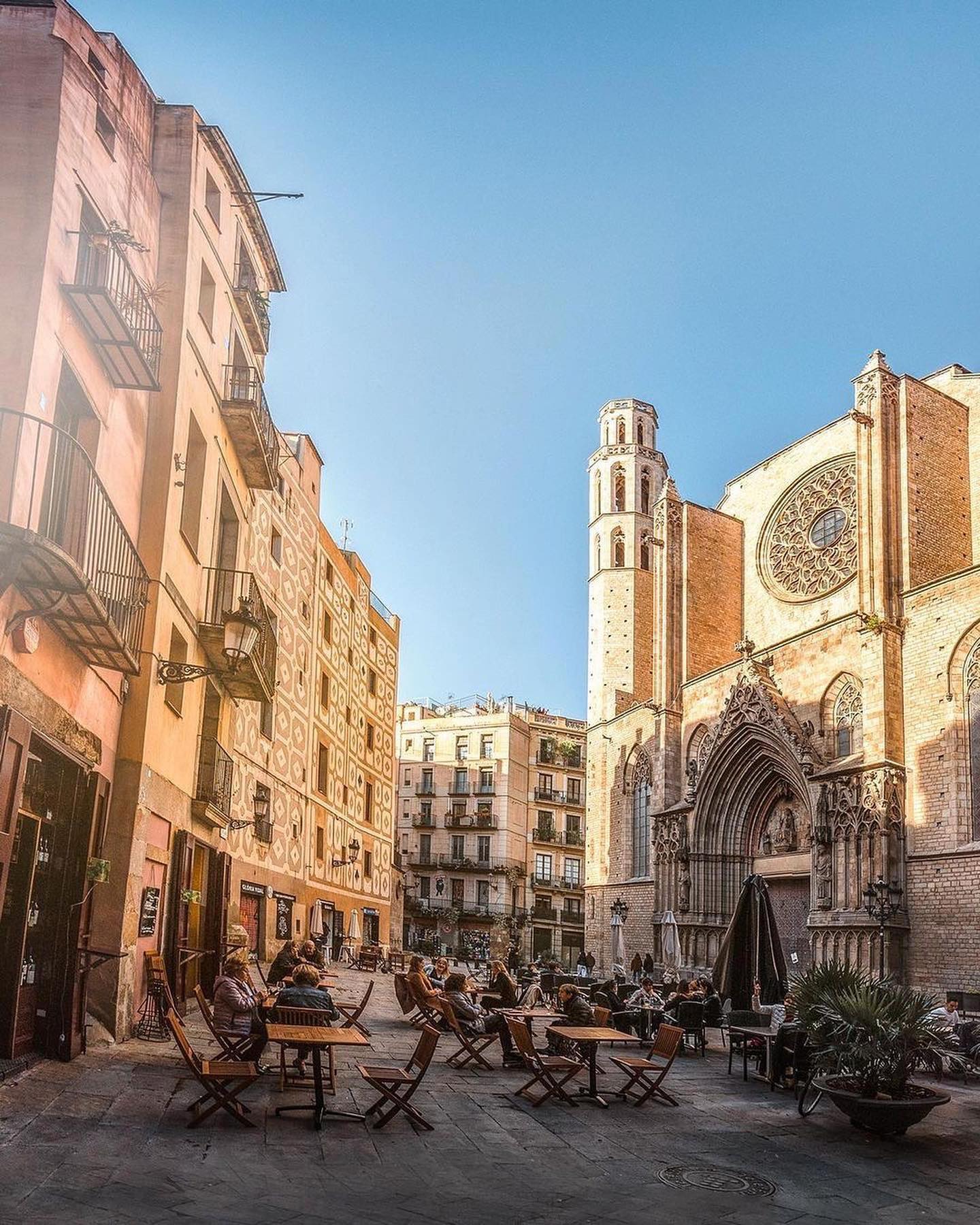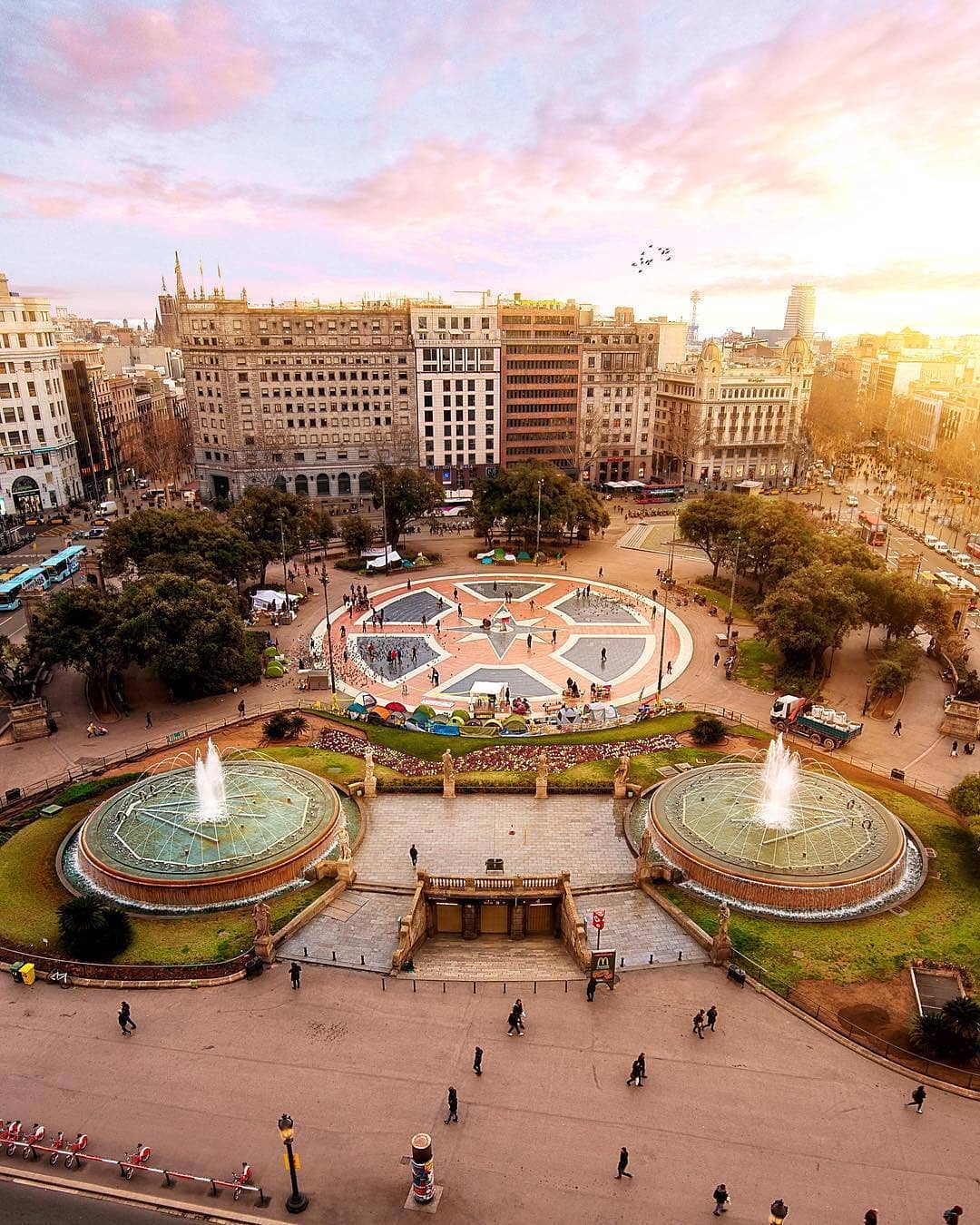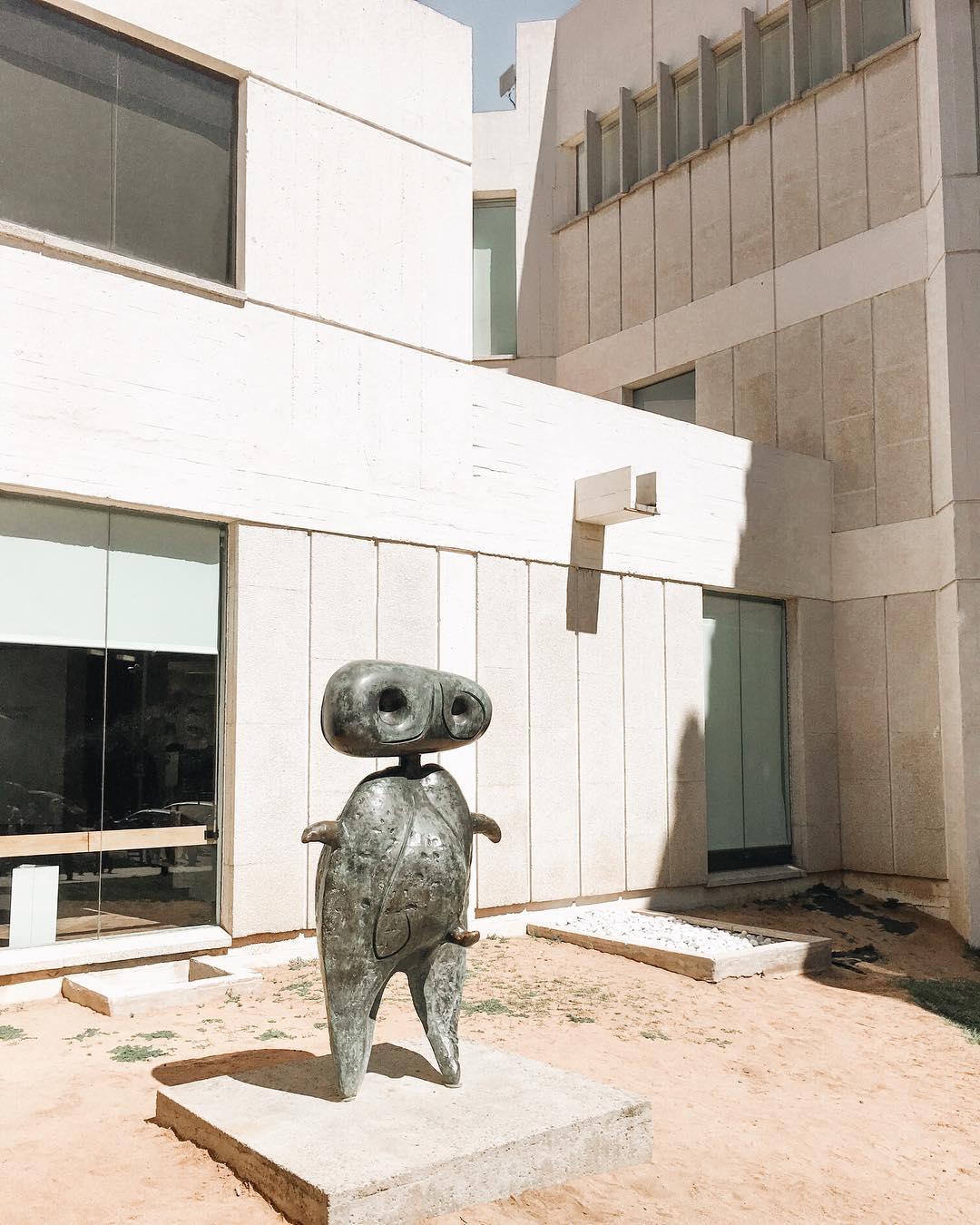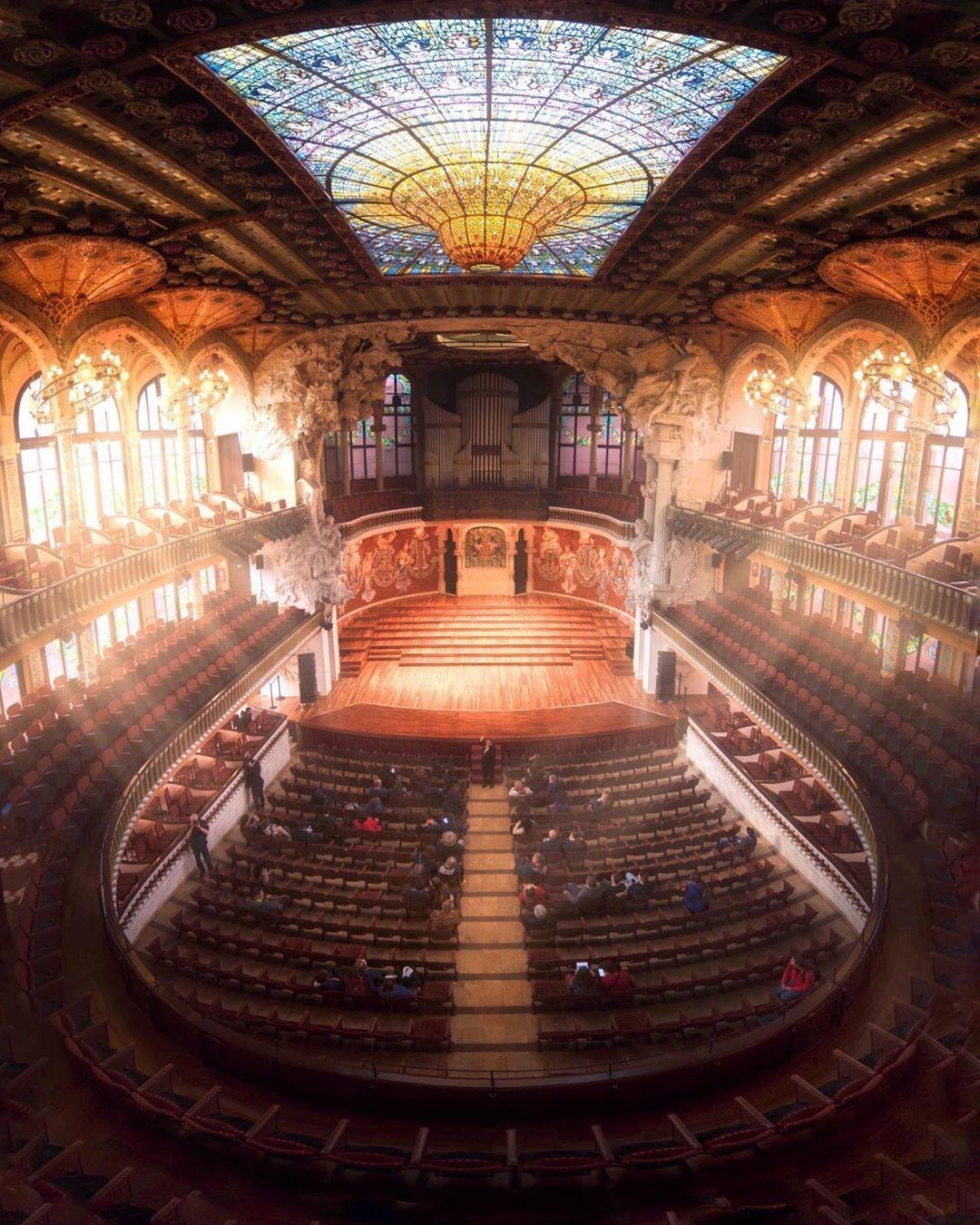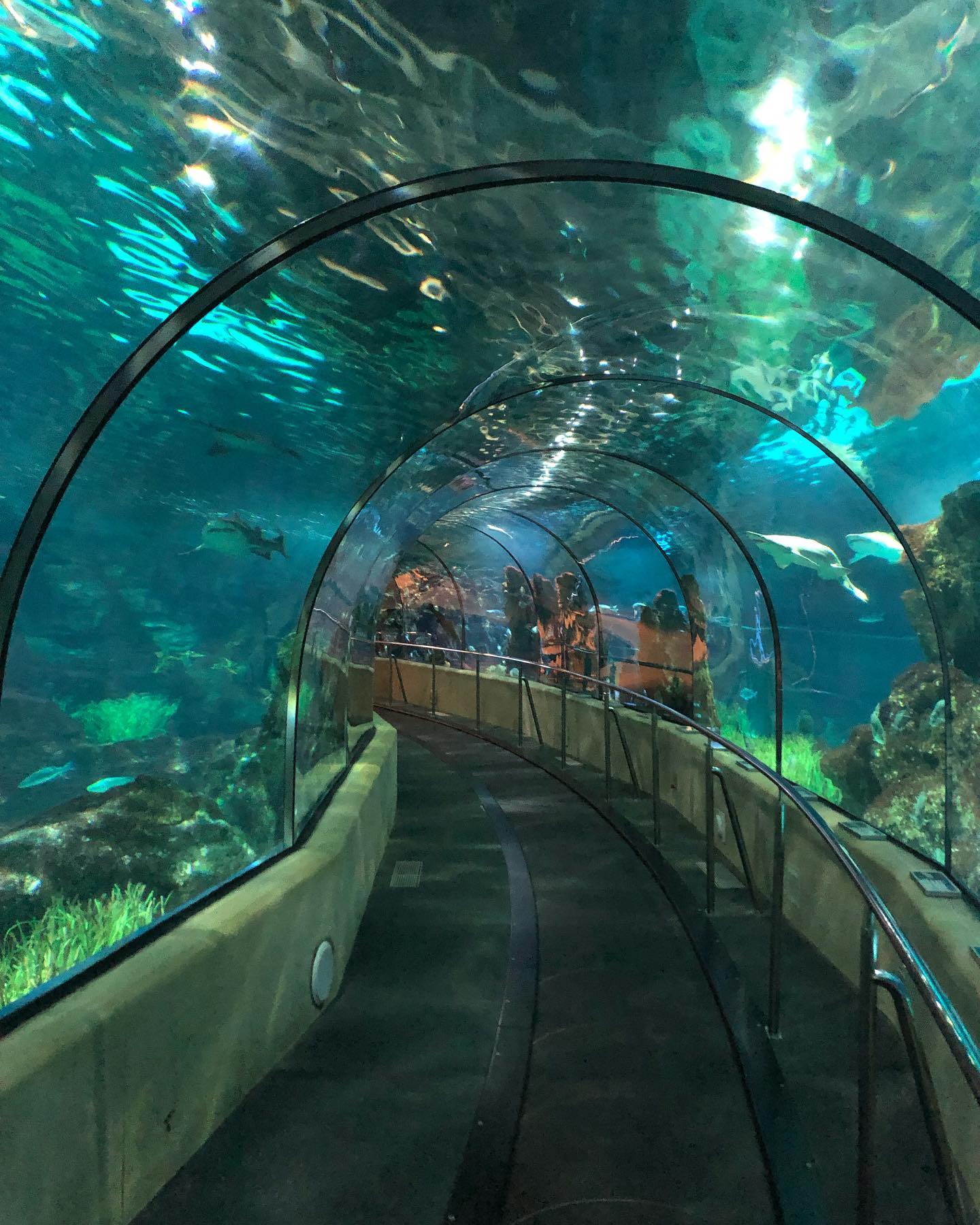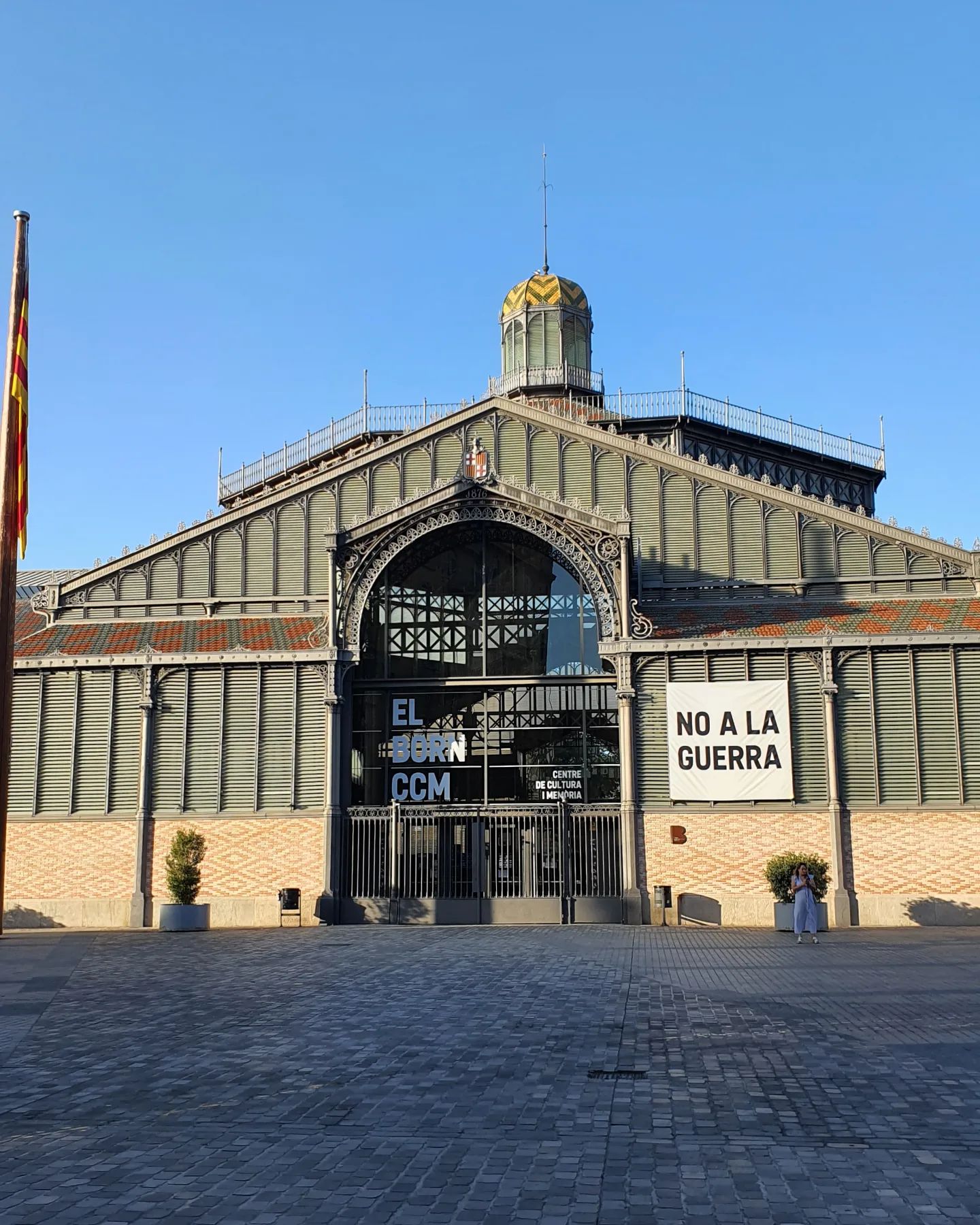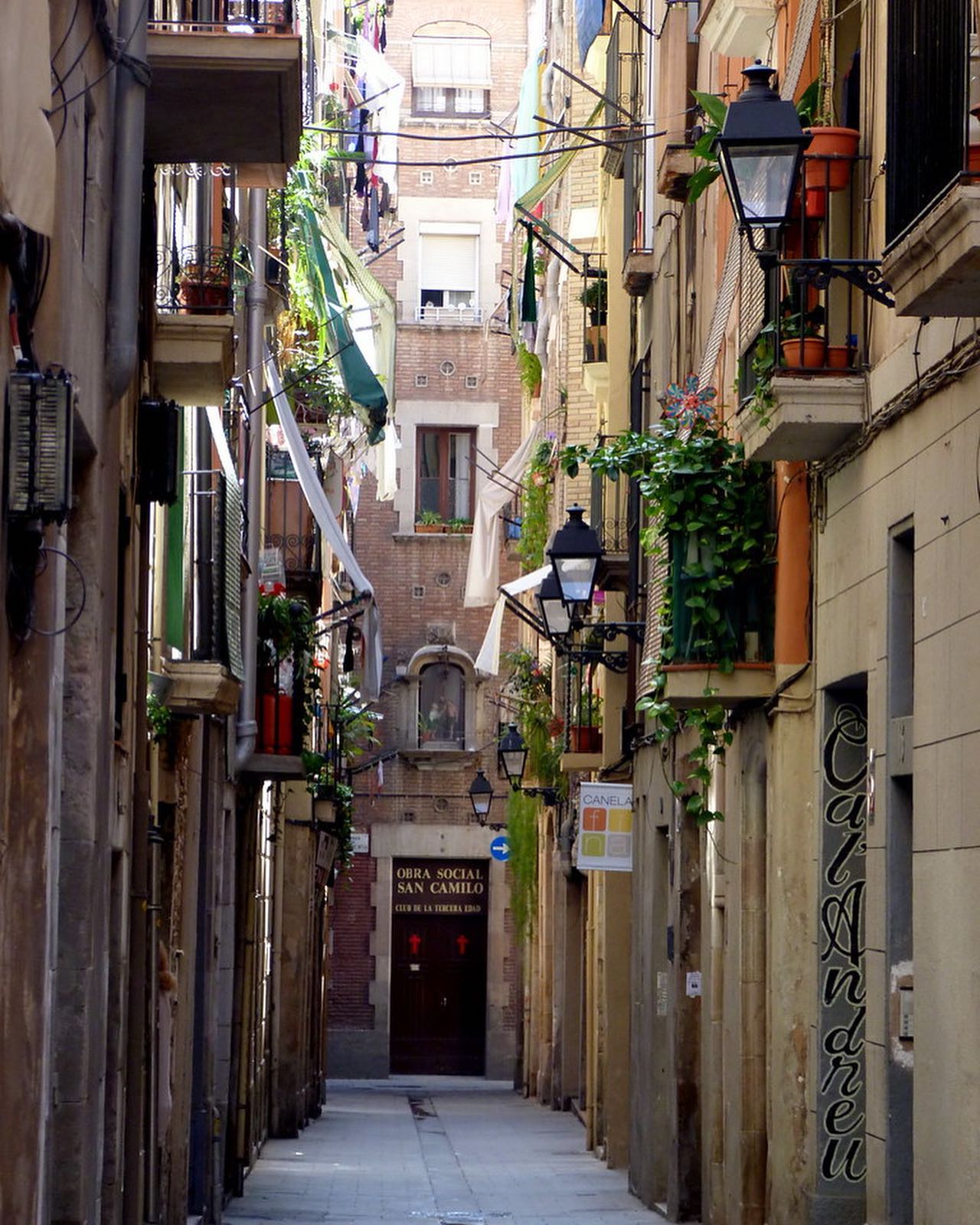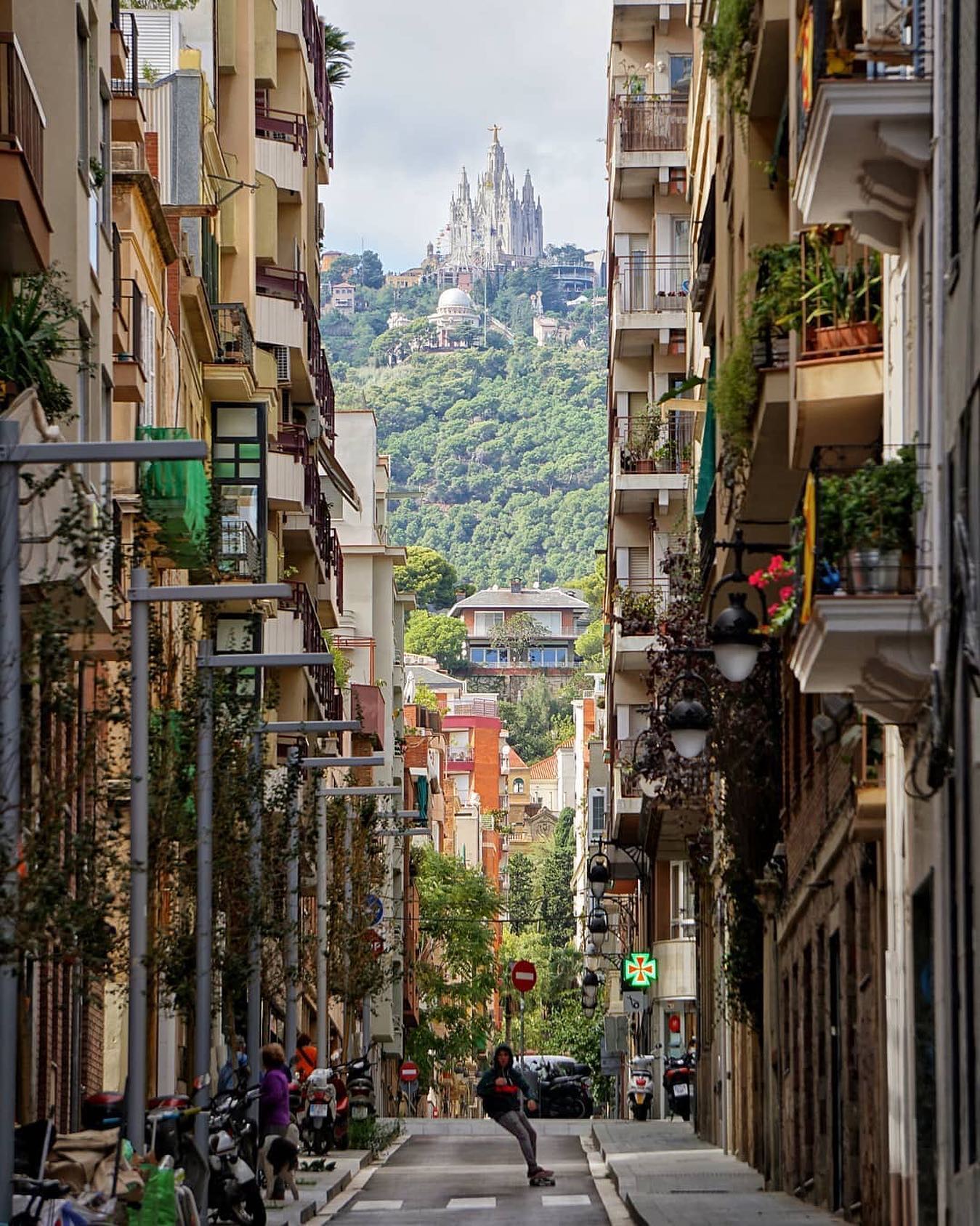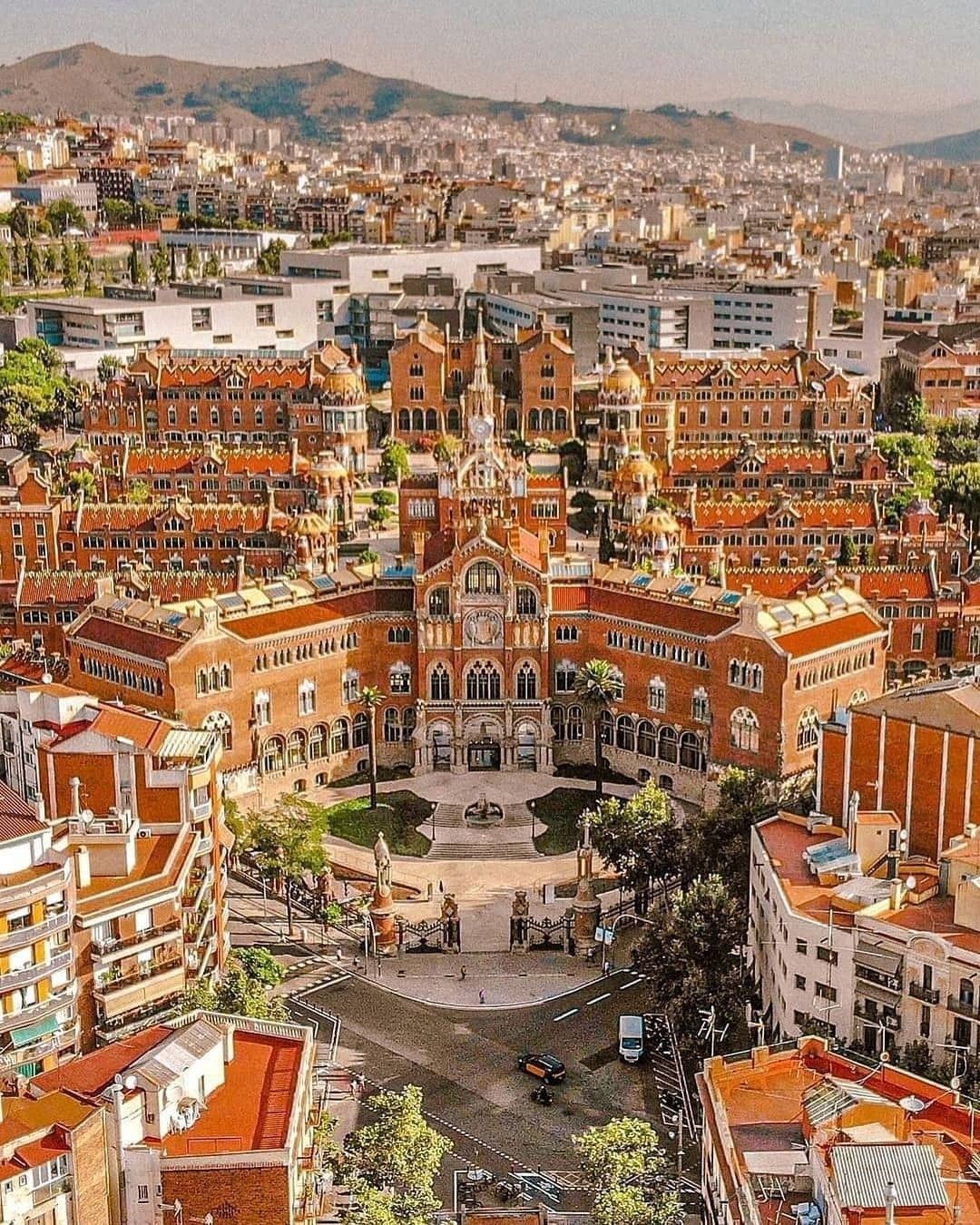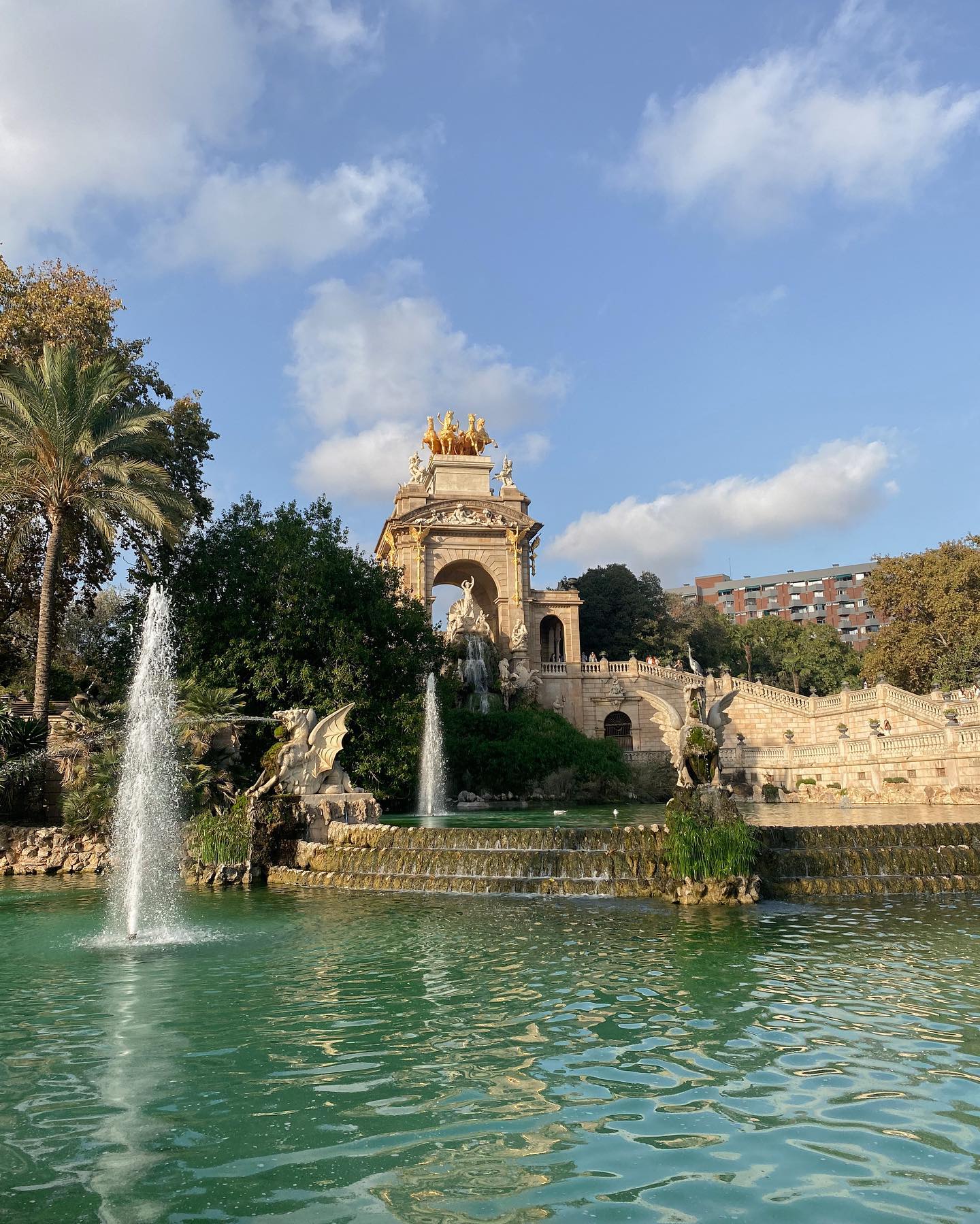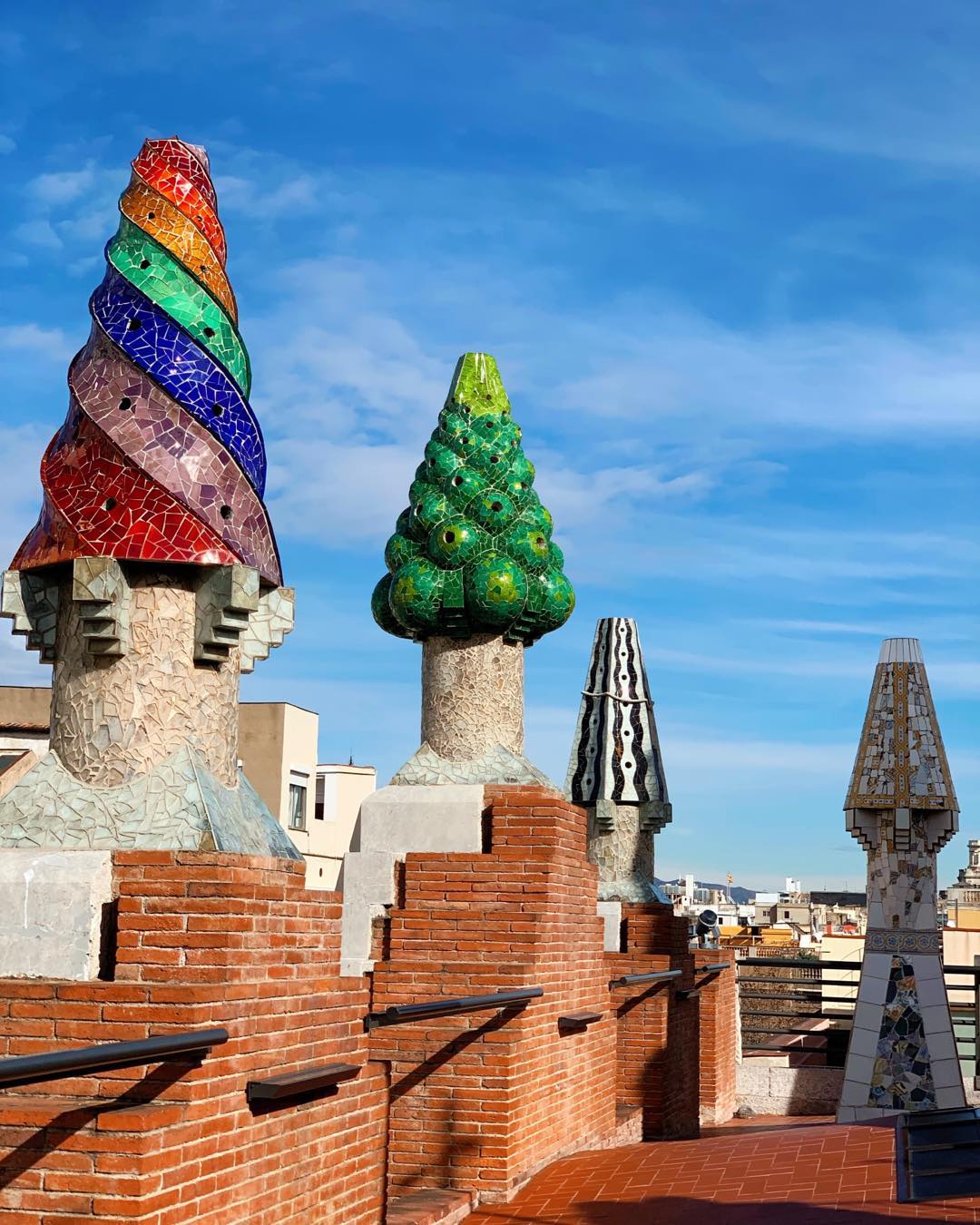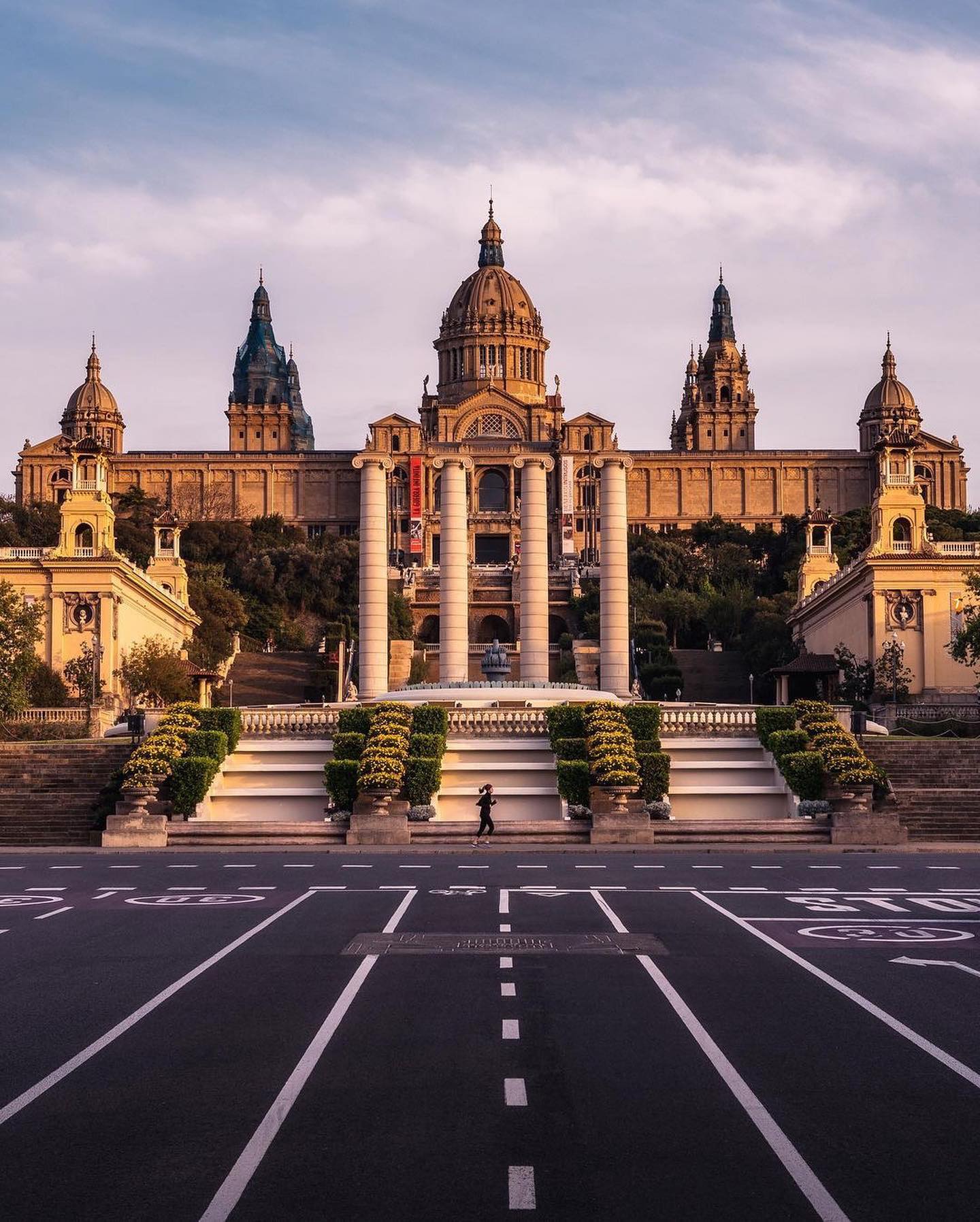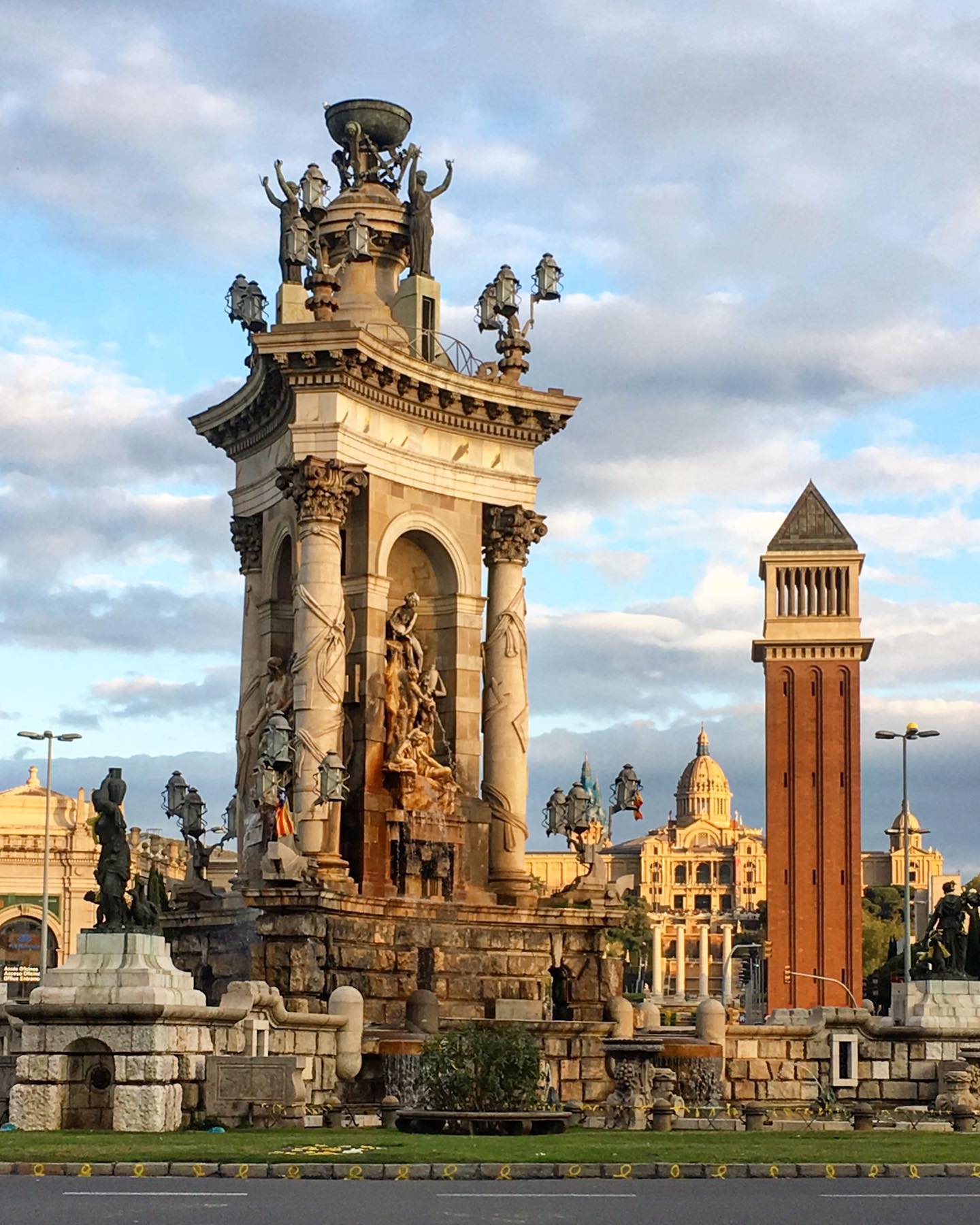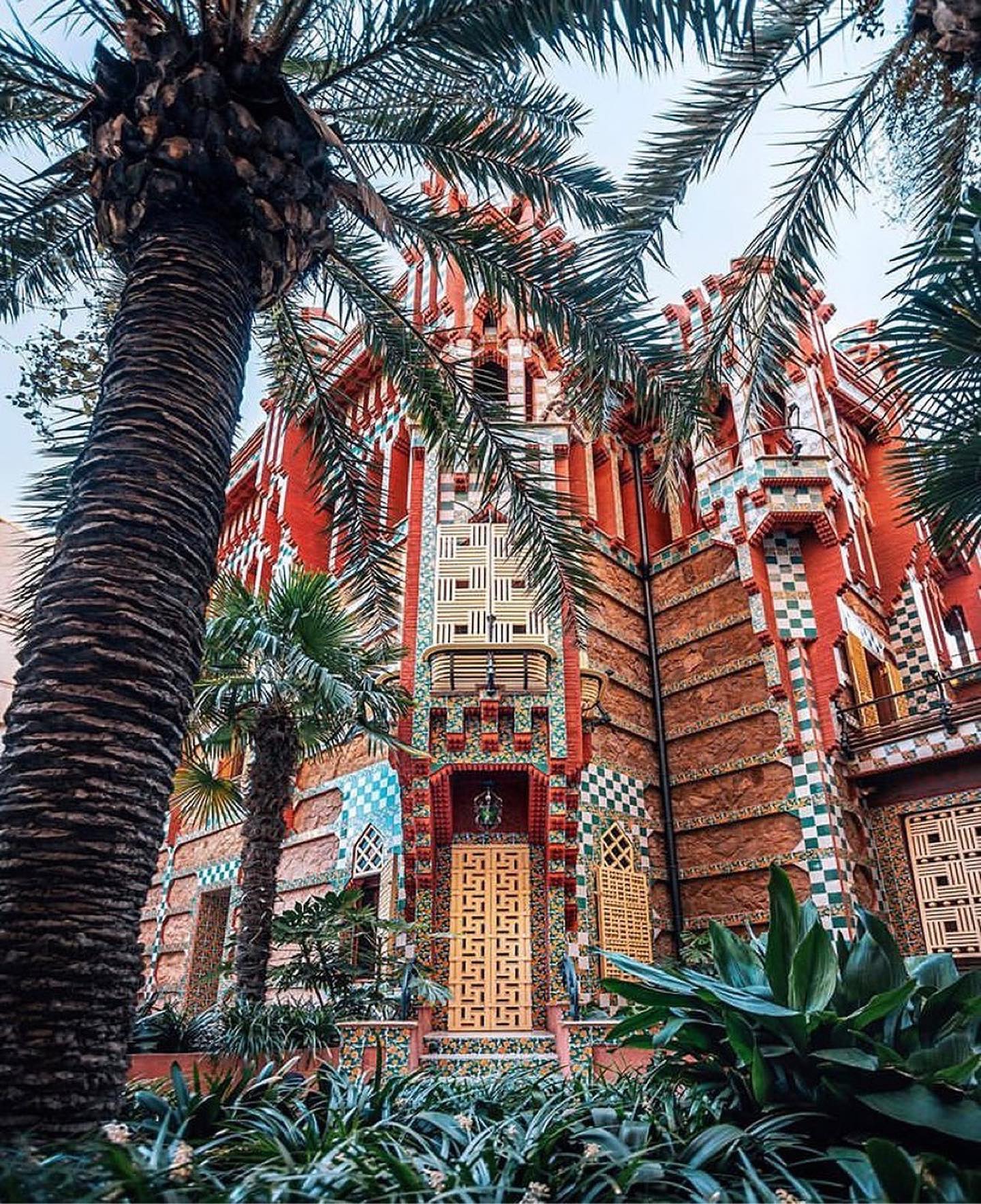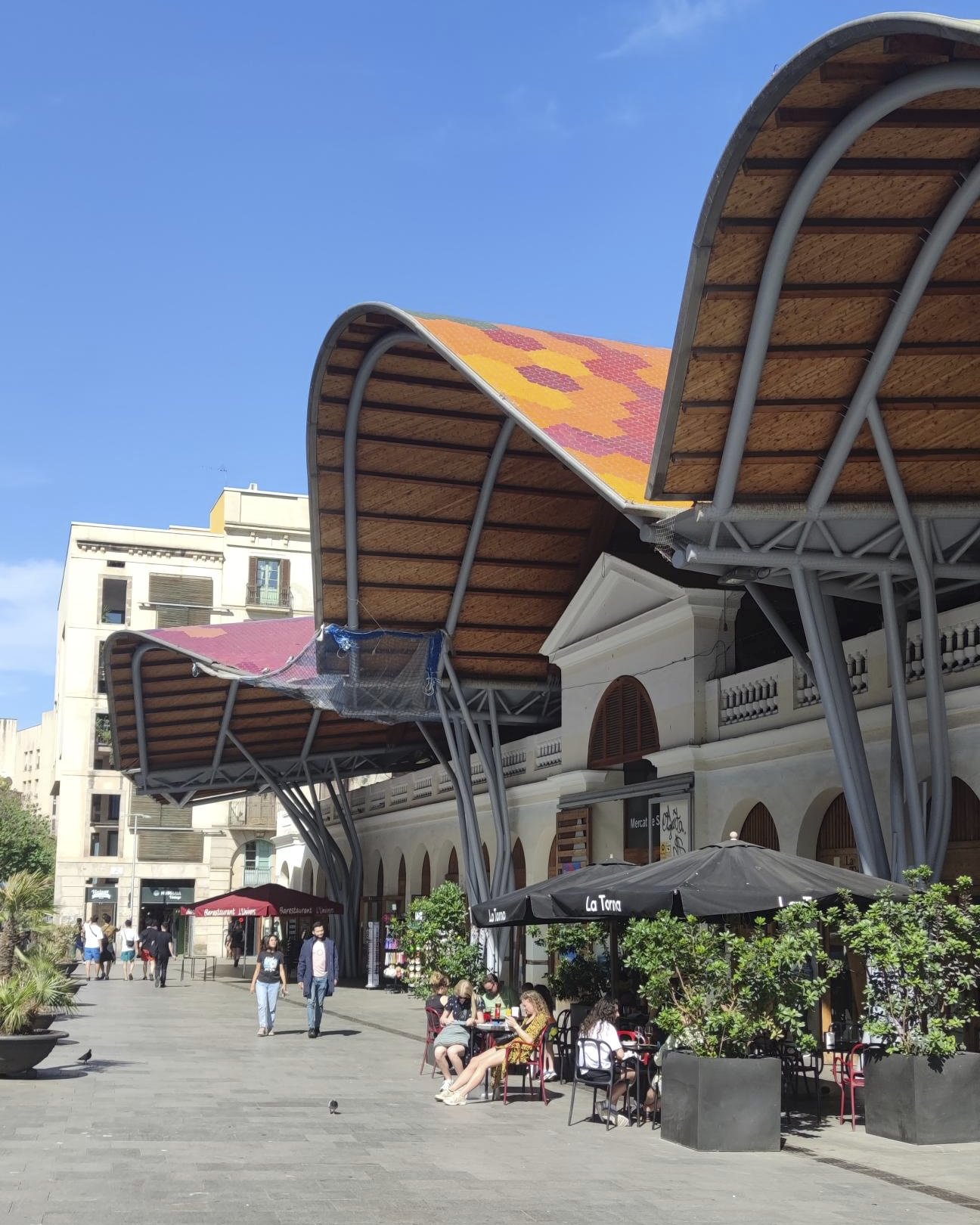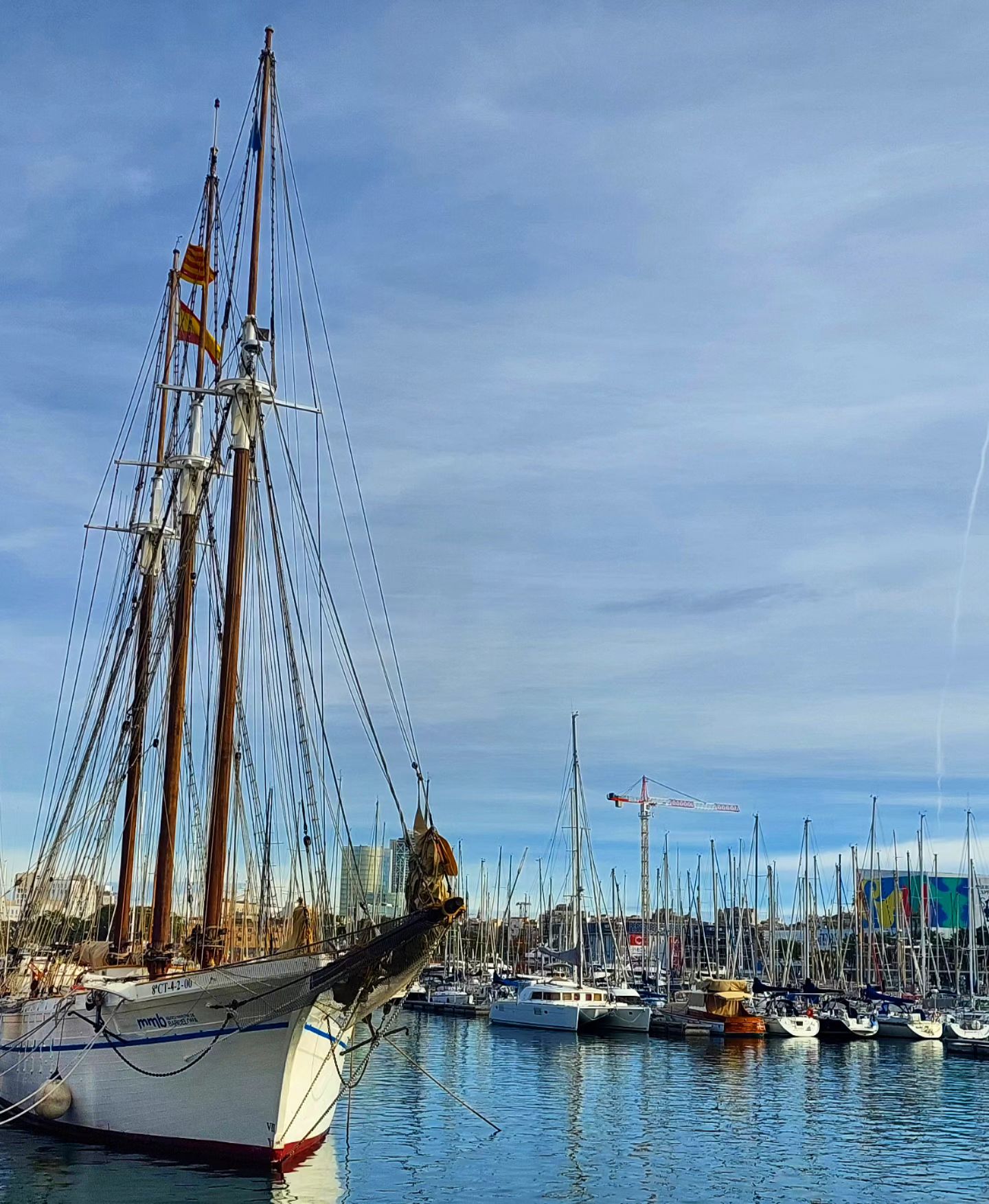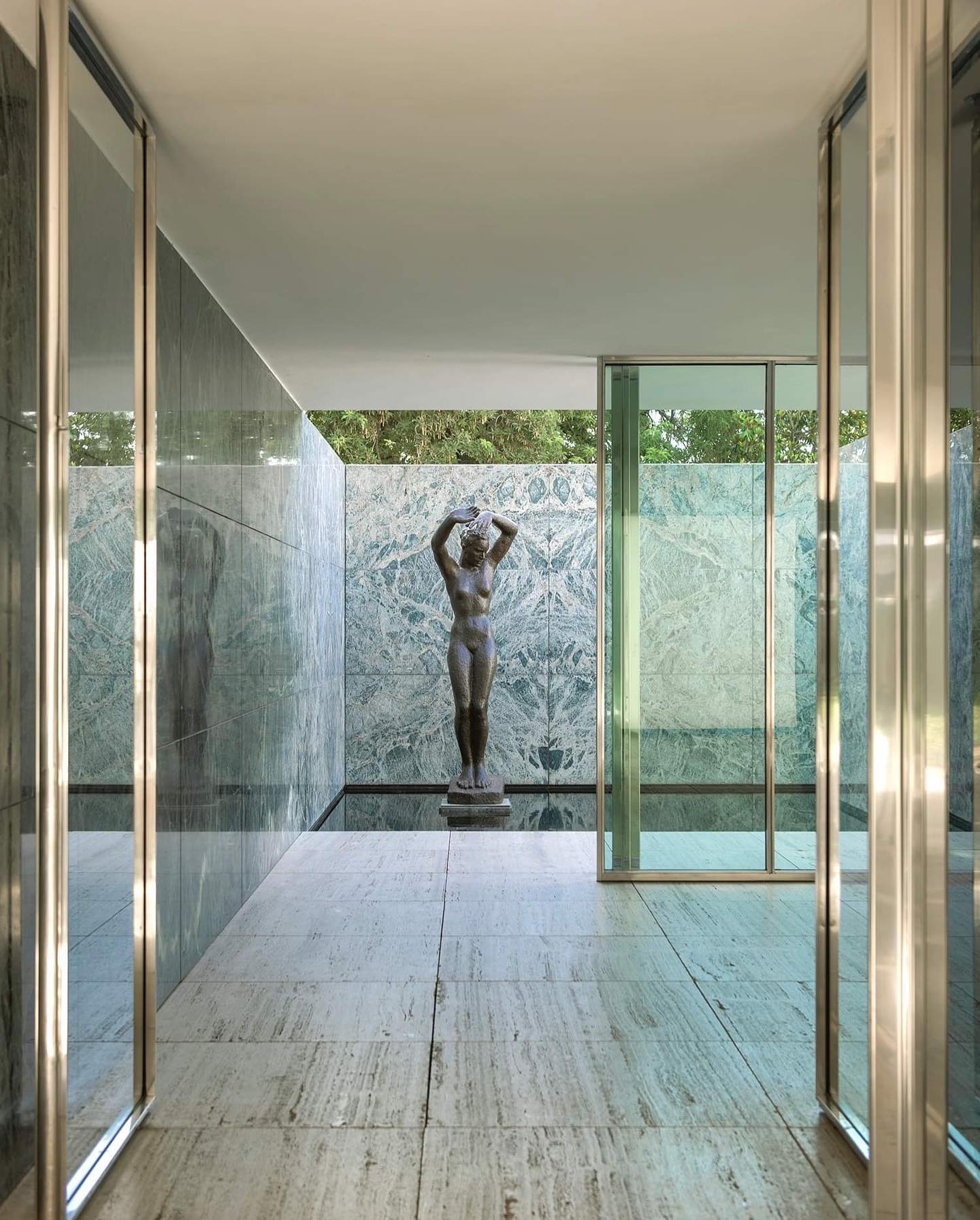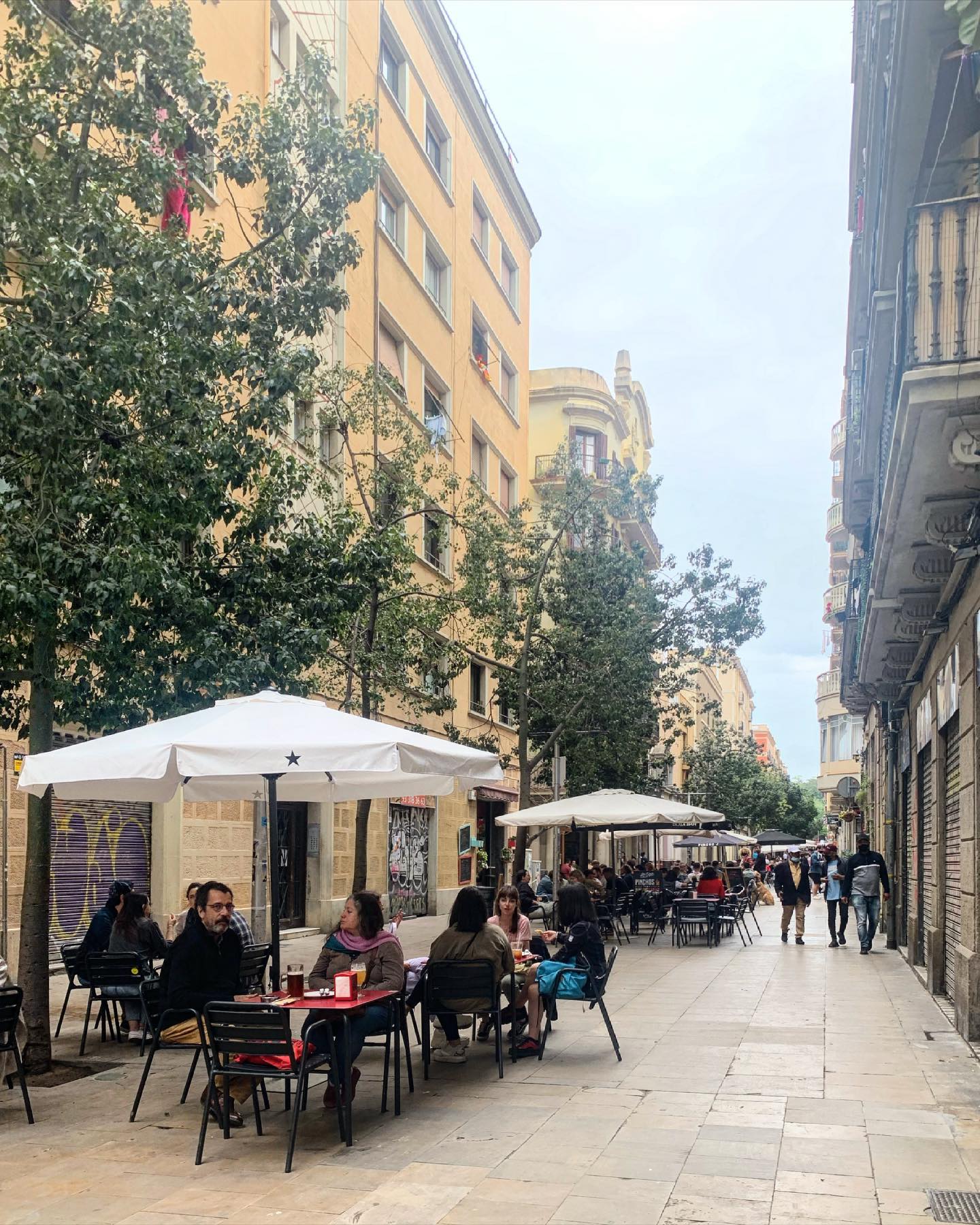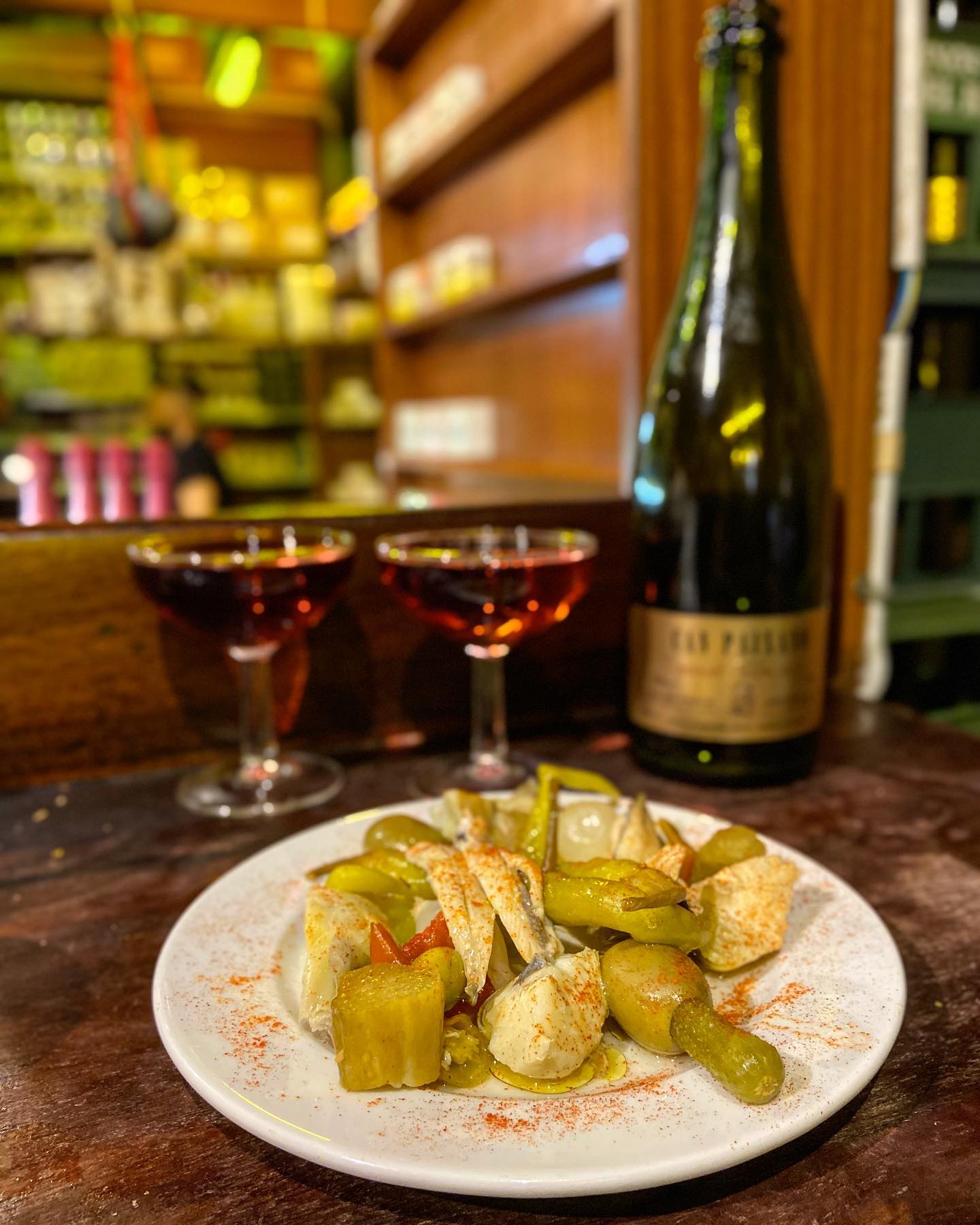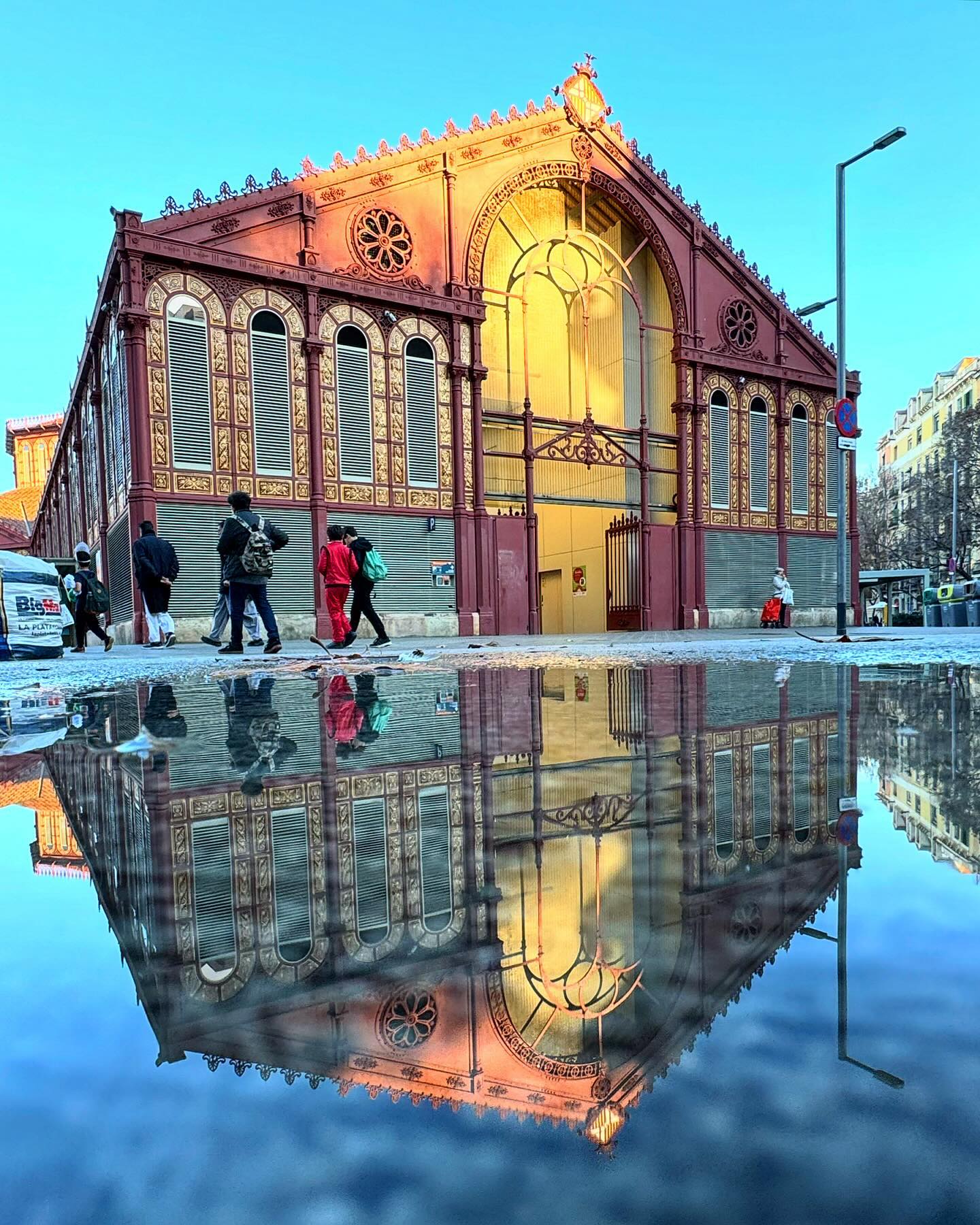Barcelona, the enchanting capital of Catalonia, is nestled along the Mediterranean coast and is a city where the past and present intertwine to create a vibrant tapestry of culture, art, and architecture. Barcelona invites travelers to embark on a journey that promises to be as diverse as it is captivating, with its rich historical heritage, stunning modernist landmarks, and a lively street life that pulsates with energy day and night.
From Antoni Gaud’s whimsical creations to the quaint, narrow streets of its Gothic Quarter, every corner of this city tells a story waiting to be discovered and treasured. In this article, we explore the 34 best places to visit in Barcelona.
1. La Sagrada Família
Photo credit: instagram.com
La Sagrada Familia, Antoni Gaud’s unfinished masterpiece, is a stunning example of Catalan Modernism. Its intricate facades and towering spires are breathtaking. The interior, with its organic shapes and stained glass, creates a one-of-a-kind, awe-inspiring environment.
The basilica combines Gothic and Art Nouveau forms, and Gaud worked on it for over 40 years. Its construction, which is entirely funded by donations, is still ongoing today, with the goal of realizing Gaud’s extraordinary vision. Visitors can explore the church’s nave, crypt, and the Passion and Nativity towers, each providing a unique perspective on Gaud’s genius.
2. Park Güell
Photo credit: instagram.com
Park Güell, another of Gaud’s designs, is a public park filled with whimsical designs, colorful mosaics, and fantastical structures. The park provides excellent city views and is ideal for a stroll. Due to commercial failure, it was converted from a residential estate into a public park.
The main terrace, surrounded by a long bench shaped like a sea serpent, is a landmark in the park. The park’s vibrant colors and imaginative designs reflect Gaud’s naturalistic style, in which he drew inspiration from organic shapes found in nature.
3. Las Ramblas
Photo credit: instagram.com
Las Ramblas is a bustling boulevard in the heart of Barcelona known for its lively atmosphere, street performers, and market stalls. It’s a great place to experience the city’s vibrant street life. It runs 1.2 kilometers from Plaça de Catalunya to the Christopher Columbus Monument in Port Vell.
This promenade has cafes, shops, and kiosks, making it ideal for people to enjoy local culture. The neighborhood is also known for historic structures such as the Gran Teatre del Liceu and the vibrant La Boqueria market, which blend traditional Catalan culture and modern city life.
4. Barri Gòtic (Gothic Quarter)
Photo credit: instagram.com
Explore the Gothic Quarter’s narrow, winding streets to find medieval buildings, hidden plazas, and historic landmarks. The stunning Barcelona Cathedral is also located in this area. The quarter is the heart of Barcelona’s old town, with many buildings dating back to medieval times and some to the Roman settlement of Barcelona.
The Plaça del Rei, a medieval public square, and the labyrinthine streets leading to the famous Plaça Sant Jaume are both must-sees. The Gothic Quarter is a bustling area filled with shops, bars, and restaurants that blend the old and the new in a uniquely Catalan fashion.
5. Casa Batlló
Photo credit: instagram.com
Casa Batlló, another Gaud masterpiece, is an architectural marvel with its undulating facade and colorful mosaic-covered exterior. The interior is equally impressive, featuring one-of-a-kind, organic designs. The building in the heart of Passeig de Gràcia is one of the most iconic modernist works. Casa Batlló was a typical house that Gaud transformed into an outstanding example of his innovative architectural style.
The house’s facade is decorated with a colorful mosaic made of broken ceramic tiles, and the roof is shaped like the back of a dragon, a common motif in Gaud’s work. The house’s interior is equally imaginative, with wavy walls, stained glass windows, and skeletal staircases.
More: Top 10 Best Beaches in Spain
6. La Boqueria Market
Photo credit: instagram.com
La Boqueria is Barcelona’s most famous food market, offering fresh produce, meats, seafood, and other culinary delights. It’s a vibrant hub of Catalan culture and gastronomy on Las Ramblas. The market’s origins can be traced back to the 13th century, making it one of Europe’s oldest markets.
The modern market was officially established in 1836, and it is now a bustling place where both locals and tourists come to enjoy fresh, high-quality products and a lively atmosphere. La Boqueria is more than just a market, from exotic fruits and vegetables to fresh seafood and a wide variety of local and international delicacies.
7. Camp Nou Stadium
Photo credit: instagram.com
Camp Nou, the home of FC Barcelona, is a must-see for football fans. Tour the stadium and museum to learn about the club’s illustrious history. With a seating capacity of over 99,000, it is Europe’s largest stadium and a colossal structure in the football world. The stadium has hosted a number of international matches, including the World Cup and Champions League finals.
The Camp Nou tour includes access to the players’ tunnel, locker rooms, the press area, and the FC Barcelona museum, which displays trophies and memorabilia from the club. A visit to Camp Nou is an unforgettable experience for football fans, offering a deep dive into the heritage of one of the world’s most beloved clubs.
8. Montjuïc
Photo credit: instagram.com
Montjuc, a prominent hill overlooking Barcelona’s harbor, provides panoramic views of the city and is a cultural treasure trove. The Magic Fountain, known for its spectacular light and music shows, and the National Art Museum of Catalonia, which houses an impressive collection of Romanesque, Gothic, Renaissance, and Baroque art, are both located on the hill.
Montjuc Castle, a 17th-century fortress at the summit of the hill, offers a historical perspective as well as stunning city views. The Joan Miró Foundation, the Olympic Stadium, and lush gardens are also located on the hill, making it a diverse cultural and recreational destination. Montjuc is a peaceful retreat from the bustling city, offering natural beauty and a glimpse into Barcelona’s rich history. It is accessible by cable car.
9. Picasso Museum
Photo credit: instagram.com
The Picasso Museum in Barcelona is dedicated to Pablo Picasso’s works, and it is especially notable for its extensive collection of his early works. The museum, which is housed in five adjoining medieval palaces in La Ribera, provides extensive insight into Picasso’s formative years and his connection to Barcelona.
The collection contains over 4,000 works that showcase the artist’s technical skill as well as his journey to developing the distinct style for which he is known. The museum exhibits not only Picasso’s paintings but also his ceramics, engravings, and early sketches, providing a comprehensive look at his artistic development. The intimate setting of the museum allows visitors to connect closely with Picasso’s work and comprehend his profound influence on twentieth-century art.
10. Passeig de Gràcia
Photo credit: instagram.com
Passeig de Gràcia is one of Barcelona’s most elegant avenues, famous for its luxury shopping, beautiful architecture, and modernist architecture. This boulevard features two of Antoni Gaud’s most famous works: Casa Batlló and La Pedrera (Casa Milà). La Pedrera is notable for its wavy stone facade and distinctive rooftop with chimney sculptures resembling warriors.
Other architectural treasures on the avenue include Casa Amatller and Casa Lleó Morera. In addition to its architectural significance, Passeig de Gràcia is a shopping paradise with various high-end boutiques and international brands, making it a must-visit for architecture enthusiasts and shoppers.
More: 15 Top Cheapest Countries in Europe
11. Barcelona Beaches
Photo credit: instagram.com
With its beautiful beaches, Barcelona’s coastline provides an ideal blend of urban and maritime experiences. Barcelona’s most famous beach, Barceloneta, is known for its lively atmosphere and promenade lined with restaurants and bars. These beaches aren’t just for sunbathing; they also have a variety of activities, such as swimming, volleyball, and water sports.
The beaches are well-kept and have amenities such as showers, sunbeds, and public Wi-Fi, making them ideal for a full day of relaxation and fun. The proximity of these beaches to the city center adds to their allure, providing an easy escape to the sea without leaving Barcelona’s other attractions. During the summer, beaches transform into vibrant hubs of activity, hosting beach parties, open-air cinemas, and other events.
12. El Raval
Photo credit: instagram.com
Once known for its bohemian atmosphere and nightlife, El Raval has evolved into a diverse and vibrant neighborhood in the heart of Barcelona. It’s a cultural melting pot full of boutiques, trendy cafes, and unique bars catering to a cosmopolitan crowd. The Museum of Contemporary Art (MACBA), known for its striking modern architecture and impressive collection of post-1945 Catalan and Spanish art, is also located in the area.
El Raval’s streets are a canvas for urban art, with numerous murals and graffiti displaying the city’s creative pulse. The mix of historic sites, such as the medieval Sant Pau del Camp monastery, and vibrant street life, such as the bustling La Rambla del Raval, make the neighborhood appealing.
13. Tibidabo Amusement Park
Photo credit: instagram.com
Tibidabo Amusement Park is a magical place located on the Tibidabo mountain, Barcelona’s highest point. This century-old amusement park combines traditional and modern rides to provide fun for people of all ages. The park’s unique location offers breathtaking panoramic views of the city and the Mediterranean Sea, making it a scenic and recreational destination.
The Giradabo, a large Ferris wheel, and the Avió, a replica of the first airplane from Barcelona to Madrid, are popular attractions. The park also houses the Temple of the Sacred Heart of Jesus, a stunning church atop the mountain. Tibidabo is more than just an amusement park; it’s a mix of fun, history, and breathtaking scenery.
14. Santa Maria del Mar
Photo credit: instagram.com
Santa Maria del Mar, located in the heart of the Born district, is an exquisite example of Catalan Gothic architecture. The church, built in the 14th century, is known for its elegant symmetry, purity of lines, and impressive stained glass windows, which flood the interior with natural light. The church’s construction is notable for being completed in a relatively short period of time (55 years), giving it a harmonious and unified architectural style.
It was historically the house of worship for Barcelona’s shipbuilders and merchants, reflecting the city’s maritime heritage. The spacious nave and soaring columns of the church create a sense of awe inside, making it a peaceful retreat in the midst of the bustling city.
15. Plaça de Catalunya
Photo credit: instagram.com
Plaça de Catalunya is Barcelona’s most famous and central square, a large open space that connects the old city to the newer Eixample neighborhood. This bustling hub is filled with fountains, sculptures, and green spaces, making it a popular meeting place and a great place to feel the city’s pulse.
Plaça de Catalunya is a major transportation hub, connecting buses, metro lines, and trains, making it an ideal starting point for exploring Barcelona. The square also serves as a gateway to some of the city’s main thoroughfares, such as Las Ramblas, Passeig de Gràcia, and Rambla de Catalunya, each leading to distinct neighborhoods and attractions.
More: Most Searched Travel Destinations of 2024
16. Fundació Joan Miró
Photo credit: instagram.com
The Fundació Joan Miró is a museum located on the hill of Montjuc dedicated to the works of the renowned Catalan artist Joan Miró. It houses many paintings, sculptures, and murals, providing a thorough overview of his long and prolific career. The building is a modernist architectural gem, designed by architect Josep Llus Sert, a close friend of Miró, with spacious galleries that perfectly complement Miró’s bold and colorful works.
The museum exhibits works by contemporary artists and works by Miró, reflecting Miró’s interest in promoting young, experimental artists. With its views of Barcelona, the sculpture garden provides a tranquil setting to admire Miró’s large-scale sculptures.
17. Palau de la Música Catalana
Photo credit: instagram.com
The UNESCO World Heritage Site Palau de la Msica Catalana is a concert hall known for its stunning Art Nouveau architecture. It was designed by architect Llus Domènech i Montaner and constructed between 1905 and 1908. The concert hall is known for its intricate mosaics, ornate sculptures, and the spectacular stained glass skylight, which floods the auditorium with natural light and creates an ethereal ambiance.
The Palau is not only a visual feast but also an acoustic marvel, hosting a variety of musical performances all year. On guided tours, visitors can explore its richly decorated interiors, including the opulent Llus Millet Hall with its iconic balcony adorned with floral motifs.
18. Barcelona Aquarium
Photo credit: instagram.com
The Barcelona Aquarium, in the Port Vell neighborhood, is one of Europe’s largest and most comprehensive aquariums, specializing in Mediterranean sea life. The aquarium has over 11,000 animals from over 450 species in various marine habitats. The highlight is the Oceanarium’s 80-meter-long underwater tunnel, which allows visitors to walk among sharks, rays, and other marine creatures.
The aquarium is not only a place to have fun but also a place to learn, with interactive exhibits and activities that promote marine conservation and awareness. It’s an excellent family destination, offering an engaging experience for both children and adults to learn about the fascinating underwater world.
19. El Born Cultural Center
Photo credit: instagram.com
El Born Cultural Center is a one-of-a-kind historical and cultural site in the bustling El Born district. It is housed in a former market building renovated to reveal ruins dating back to the 1700s, giving visitors a glimpse into Barcelona’s past. These archaeological remains tell the city’s story during the War of Spanish Succession and provide insight into its inhabitants’ daily lives.
The center hosts many exhibitions and cultural events, such as art shows, performances, and workshops, making it a lively space that combines history, culture, and contemporary art. Its location in one of Barcelona’s most dynamic neighborhoods makes it an excellent starting point for exploring the city’s old and new sides.
20. La Ribera
Photo credit: instagram.com
La Ribera is a charming Barcelona neighborhood known for its rich history and medieval streets. It is part of the larger Ciutat Vella district and provides a glimpse into the city’s past with its historic buildings and narrow alleyways. The neighborhood is home to a number of artisan shops and independent boutiques, making it an ideal location for discovering unique crafts and local designs.
The Basilica of Santa Maria del Mar, an excellent example of Catalan Gothic architecture, and the Palau de la Msica Catalana are two notable landmarks. La Ribera is also known for its vibrant cultural scene, which includes numerous small galleries, trendy bars, and cozy cafes ideal for soaking up the local vibe.
More: 10 Gay-Friendly Countries in the World
21. Gràcia
Photo credit: instagram.com
Gràcia, once an independent town, has retained its distinct identity despite becoming a part of Barcelona. This area is well-known for its bohemian spirit, artistic community, and network of lively plazas. Gràcia’s narrow streets are lined with a variety of one-of-a-kind boutiques, artisanal shops, and international eateries, reflecting the neighborhood’s diverse and welcoming culture.
The neighborhood is particularly well-known for its annual Festa Major de Gràcia, during which the streets are transformed with elaborate decorations created by the residents. Gràcia is also the location of Park Güell, one of Gaud’s major works, making it a must-see destination for those interested in art, culture, and community spirit.
22. Torre Glòries
Photo credit: instagram.com
Torre Glries, formerly Torre Agbar, is a striking example of Barcelona’s contemporary architecture. The tower, designed by French architect Jean Nouvel, is notable for its bullet-shaped silhouette and glass and aluminum facade. At night, the tower transforms into a light show, illuminated by over 4,500 LED devices that create a mesmerizing effect.
Despite being primarily an office building, its distinctive design has made it a well-known landmark and a symbol of modern Barcelona. The tower’s design was inspired by Montserrat, a mountain near Barcelona, and Gaud’s Sagrada Familia, reflecting the city’s blend of natural forms and architectural heritage.
23. Hospital de Sant Pau
Photo credit: instagram.com
The Hospital de Sant Pau is a UNESCO World Heritage Site and a stunning example of modernist architecture. It is a complex of pavilions connected by underground passages designed by architect Llus Domènech i Montaner, each adorned with intricate mosaics, stained glass, and sculptures. The hospital’s main building has a grand entrance hall and a beautiful administration pavilion in the art nouveau style.
Though it was a hospital until 2009, it is now a museum and cultural center that hosts exhibitions, conferences, and guided tours. The hospital’s design was innovative, emphasizing natural light and ventilation, reflecting a fresh approach to healthcare architecture. The complex is not only a work of art of Catalan modernism, but it also represents Barcelona’s innovative spirit.
24. Ciutadella Park
Photo credit: instagram.com
Ciutadella Park is Barcelona’s most important green space, providing a tranquil retreat in the city’s heart. The park includes a beautiful fountain designed in part by Antoni Gaud, a young architecture student at the time. Visitors can take a leisurely boat ride on the park’s small lake, which provides a peaceful respite from the city’s bustle.
The park also houses the Barcelona Zoo, a popular family attraction with diverse wildlife and educational programs. The Catalan Parliament is located within the park, giving the area a touch of political history. Ciutadella Park, with its wide pathways, lush greenery, and sculptures, is ideal for picnics, jogging, or simply relaxing under the shade of its many trees.
25. Palau Güell
Photo credit: instagram.com
One of Antoni Gaud’s early works, Palau Güell, is a mansion designed for industrial tycoon Eusebi Güell. This palace, located near the lower end of La Rambla, showcases Gaud’s innovative design and architectural genius. The interiors of the building are notable for their opulence, with intricate woodwork, colorful tiling, and stunning ironwork.
The rooftop is especially well-known for its whimsical chimneys, each of which is individually designed and adorned with trencads (broken tile mosaics). Gaud’s Art Nouveau style is reflected in the Palau Güell, which is a precursor to his later, more famous projects. This hidden gem offers a fascinating insight into Gaud’s architectural evolution in its early stages.
More: 10 Amazingly Beautiful Fountains around the World
26. Museu Nacional d’Art de Catalunya (MNAC)
Photo credit: instagram.com
The Museu Nacional d’Art de Catalunya (MNAC) is housed in the magnificent Palau Nacional de Montjuc and houses a large collection of Catalan art. The museum’s collections range from the Romanesque period to the mid-twentieth century, with notable frescoes, sculptures, paintings, and photography. The MNAC is particularly well-known for its collection of Romanesque church paintings, which is regarded as one of the most extensive in the world.
The museum also features impressive works of Gothic, Renaissance, Baroque, and Modern art, as well as works by well-known Catalan artists. MNAC is a key institution in Barcelona’s art scene because it hosts temporary exhibitions and cultural events in addition to its extensive permanent collection.
27. Plaça Espanya
Photo credit: instagram.com
Plaça Espanya is a significant and iconic square in Barcelona. The square, designed for the 1929 International Exhibition, is notable for its impressive fountains and Venetian Towers that mark the entrance to the exhibition grounds on Montjuc. The square is a major transportation hub and is surrounded by several eye-catching structures, including the former bullring, which is now a shopping center.
The Montjuc Magic Fountain, located near the square, provides spectacular light and water shows, especially popular at night. Plaça Espanya also serves as a gateway to the Fira de Barcelona, one of Europe’s most important trade fair institutions, as well as a starting point for exploring the Montjuc area’s numerous museums, gardens, and cultural venues.
28. Casa Vicens
Photo credit: instagram.com
Casa Vicens, located in the Gràcia district, is Antoni Gaud’s first major work and a precursor to his later famous projects. Because of its artistic and historical significance, this house, built between 1883 and 1885, was designated a UNESCO World Heritage Site. Casa Vicens exemplifies Gaud’s innovative design approach, using vibrant colors, geometric patterns, and natural motifs.
The building was originally used as a summer residence and is notable for its Oriental and Moorish influences, which were prominent in Gaud’s early works. Casa Vicens reopened to the public as a museum after extensive restoration, giving visitors a glimpse into Gaud’s early architectural style and his development as a leading figure in modernist architecture.
29. Santa Caterina Market
Photo credit: instagram.com
Santa Caterina Market, located in the El Born neighborhood, is a vibrant local market known for its eye-catching, colorful roof designed by Enric Miralles and Benedetta Tagliabue. The roof’s undulating shape and bright ceramic tiles resemble flowing fabric, making it a distinctive architectural feature in the neighborhood.
The market sells various fresh, high-quality produce, such as fruits, vegetables, meats, and seafood. It’s a popular destination for locals and tourists, offering an authentic taste of Catalan cuisine. There are also several eateries and tapas bars in the market where visitors can enjoy fresh food in a lively atmosphere. Santa Caterina Market is more than just a shopping destination; it’s also a cultural and social hub celebrating Barcelona’s rich culinary heritage.
More: 10 Most Futuristic Buildings in the World
30. Port Vell
Photo credit: instagram.com
Port Vell, Barcelona’s old harbor, has been transformed into a modern leisure complex that attracts both locals and tourists. The area is home to a number of attractions, including an IMAX cinema, the Maremagnum shopping mall, and Europe’s largest aquarium. The Rambla de Mar wooden walkway leads to the Maremagnum and provides stunning views of the harbor and the Mediterranean Sea.
The historic shipyard (Drassanes), the Maritime Museum, and a number of luxury yachts and boats are also located in Port Vell. The harbor area is ideal for a leisurely stroll, dining at waterfront restaurants, or simply relaxing and watching the boats come and go.
31. Barcelona Pavilion
Photo credit: pinterest.com
Ludwig Mies van der Rohe designed the Barcelona Pavilion for the 1929 International Exposition. It is an iconic piece of modern architecture. It was originally known as the German Pavilion and was intended to highlight Germany’s progressive and innovative culture. The structure is admired for its straightforward design, elegant use of materials, and seamless integration of indoor and outdoor spaces. After being dismantled following the exhibition, the pavilion was rebuilt in the 1980s in its original location.
It’s famous for its minimalistic design, which includes a flat roof, an open floor plan, and the iconic Barcelona chair. Its aesthetic appeal is enhanced by using luxurious materials such as marble, travertine, and onyx. The pavilion is a symbol of modernist design principles as well as an architectural landmark.
32. Carrer de Blai
Photo credit: pinterest.com
Carrer de Blai is a bustling street in the vibrant neighborhood of Poble-sec, known for its lively atmosphere and culinary delights. This pedestrian-only street is lined with tapas, bars and pintxo joints that serve a wide range of small bites and snacks. Pintxos, a type of tapas served on bread and held together with a toothpick, are especially popular here.
The street has a friendly and casual vibe, making it popular for a night out among both locals and tourists. Visitors can hop from one bar to the next, sampling various pintxos and drinks, making it a great way to sample local flavors and socialize. Carrer de Blai is not only a food destination, but it also provides insight into Barcelona’s convivial dining culture.
33. La Xampanyeria
Photo credit: instagram.com
La Xampanyeria, also known as Can Paixano, is a popular Barcelona bar known for its lively atmosphere and authentic Catalan experience. This bustling establishment near the Barceloneta beach is well-known for its Cava, a sparkling Spanish wine, and a variety of tapas. The bar is frequently packed with both locals and tourists, creating a vibrant and energetic atmosphere.
The menu features traditional Catalan tapas such as cured meats, cheeses, and sandwiches that pair perfectly with their Cava selection. Visiting La Xampanyeria is more than just a dining experience; it’s a dive into the bustling and lively spirit of Barcelona, where lively conversations and a cheerful crowd always accompany good food and drinks.
34. Mercat de Sant Antoni
Photo credit: instagram.com
The Mercat de Sant Antoni, a newly renovated market in Barcelona’s Sant Antoni neighborhood, is a stunning example of modernist architecture. The market, built in the late 1800s, underwent extensive renovations to restore its original charm while incorporating modern amenities. It combines traditional market stalls selling fresh produce, meats, fish, and other culinary staples with modern eateries and bars.
The market is a focal point for the local community and a popular destination for food enthusiasts. On Sundays, the surrounding streets come alive with a used book and collectible market. The Mercat de Sant Antoni combines historical architecture with a modern urban lifestyle, making it a lively and inviting shopping and socializing destination.
More: 10 Lesser Known Ancient Ruins in Europe

